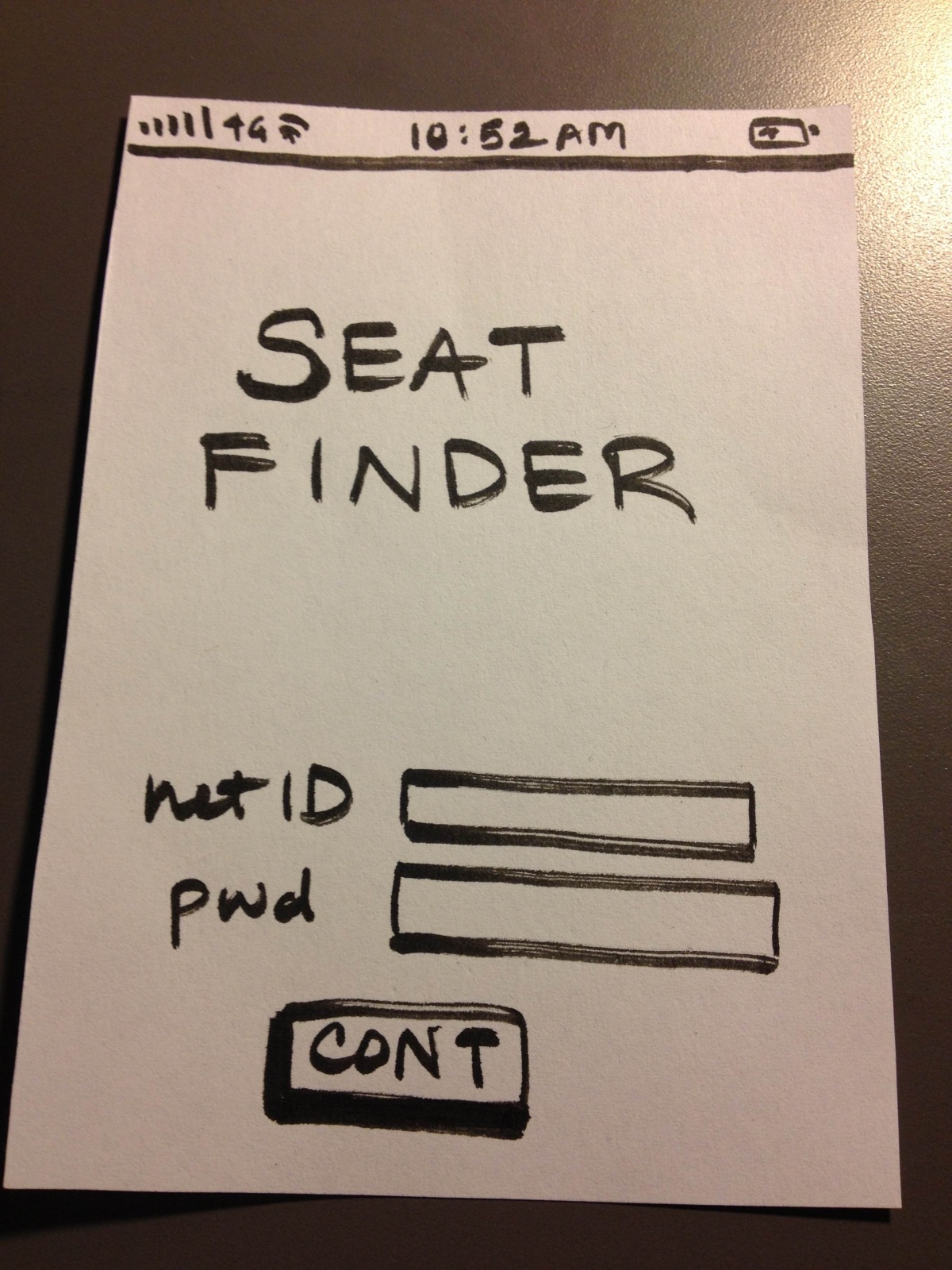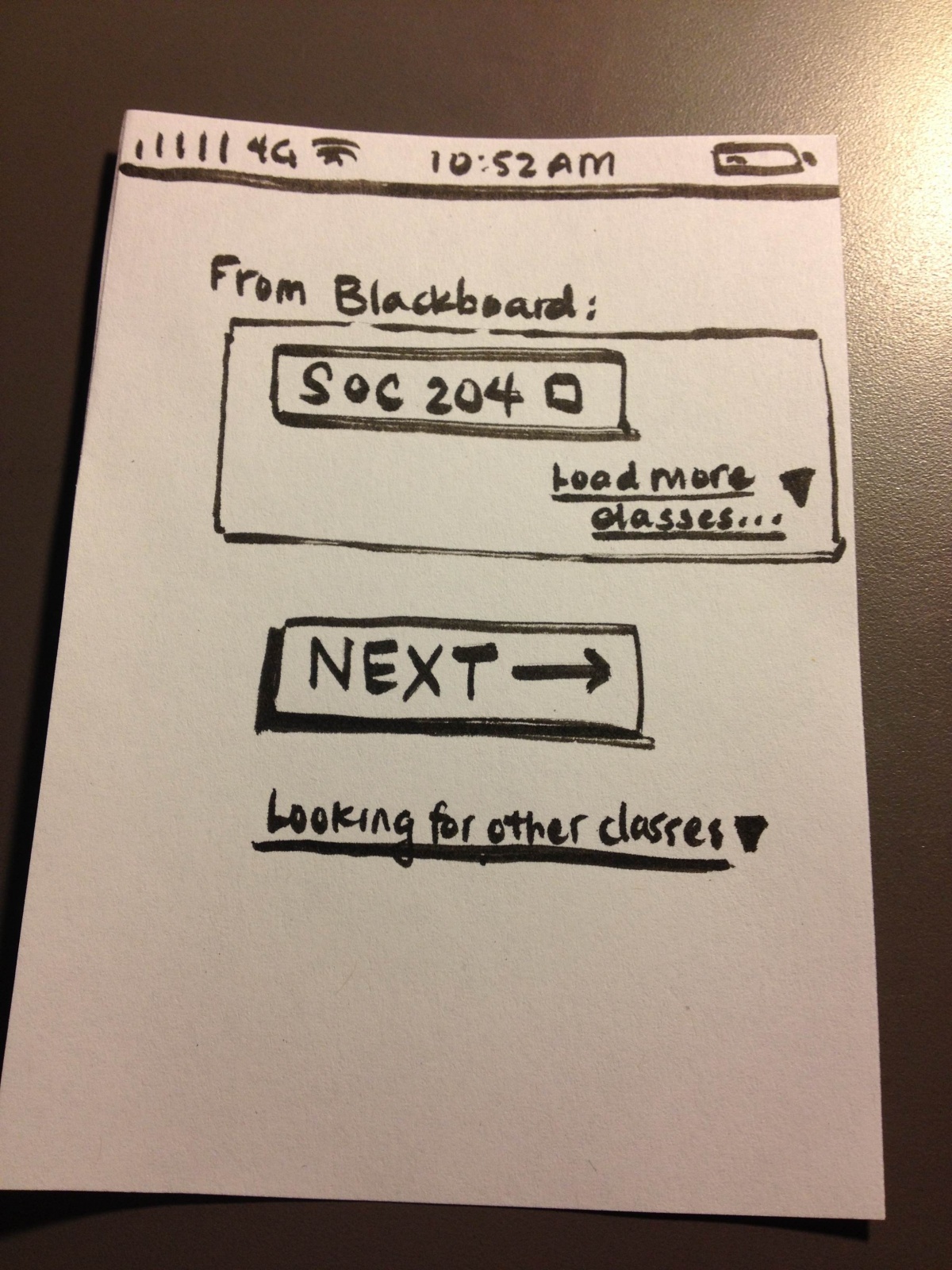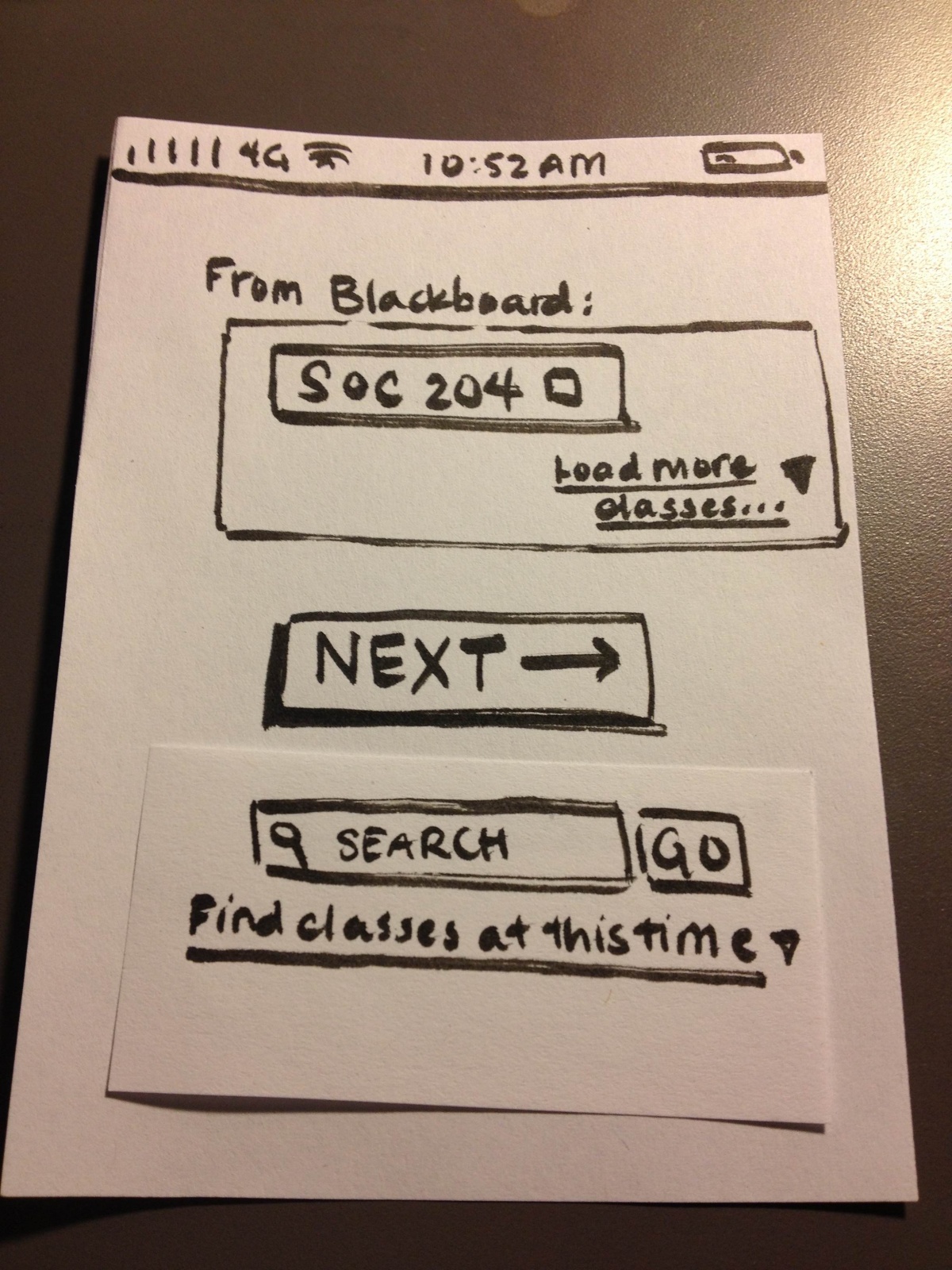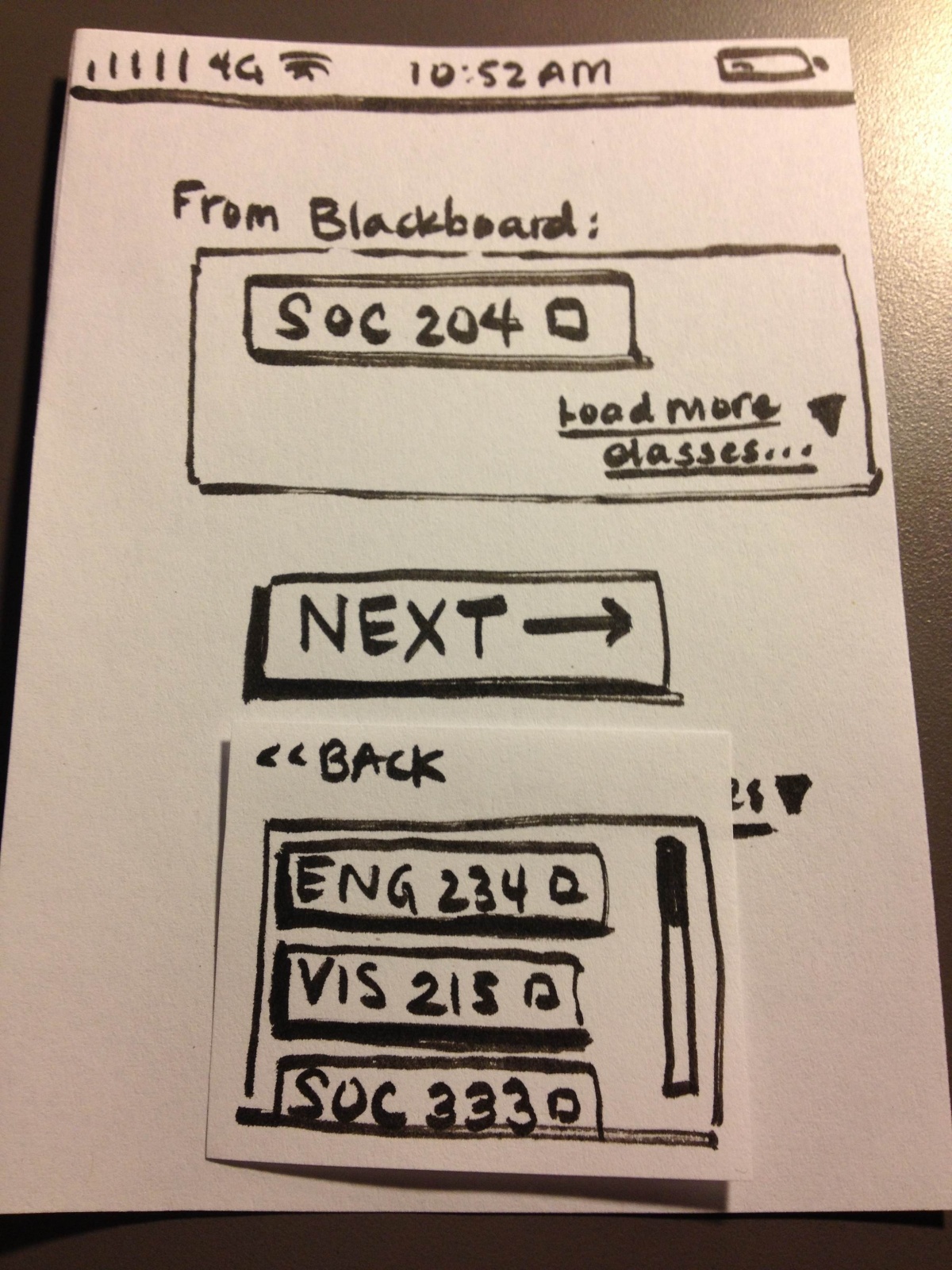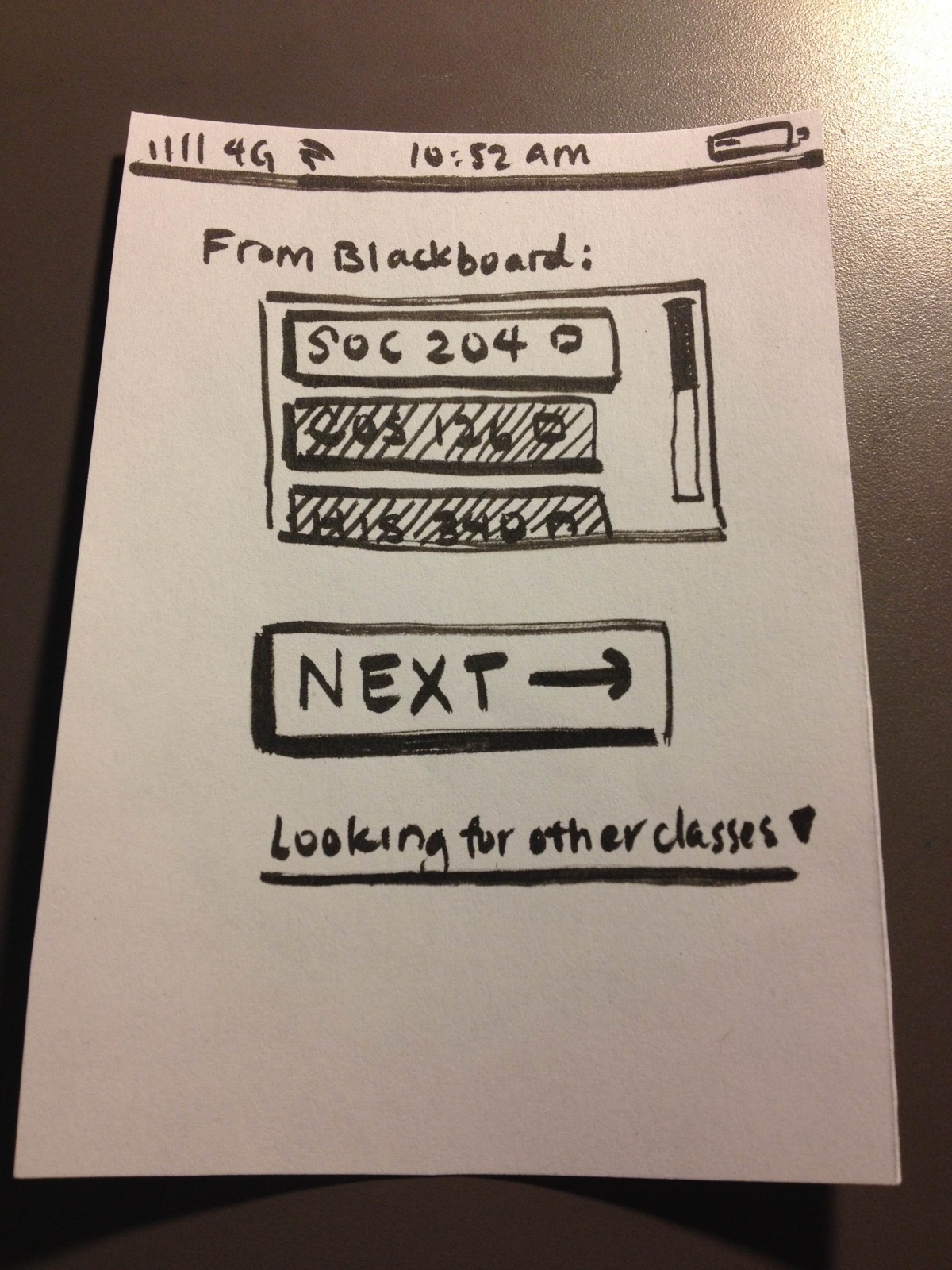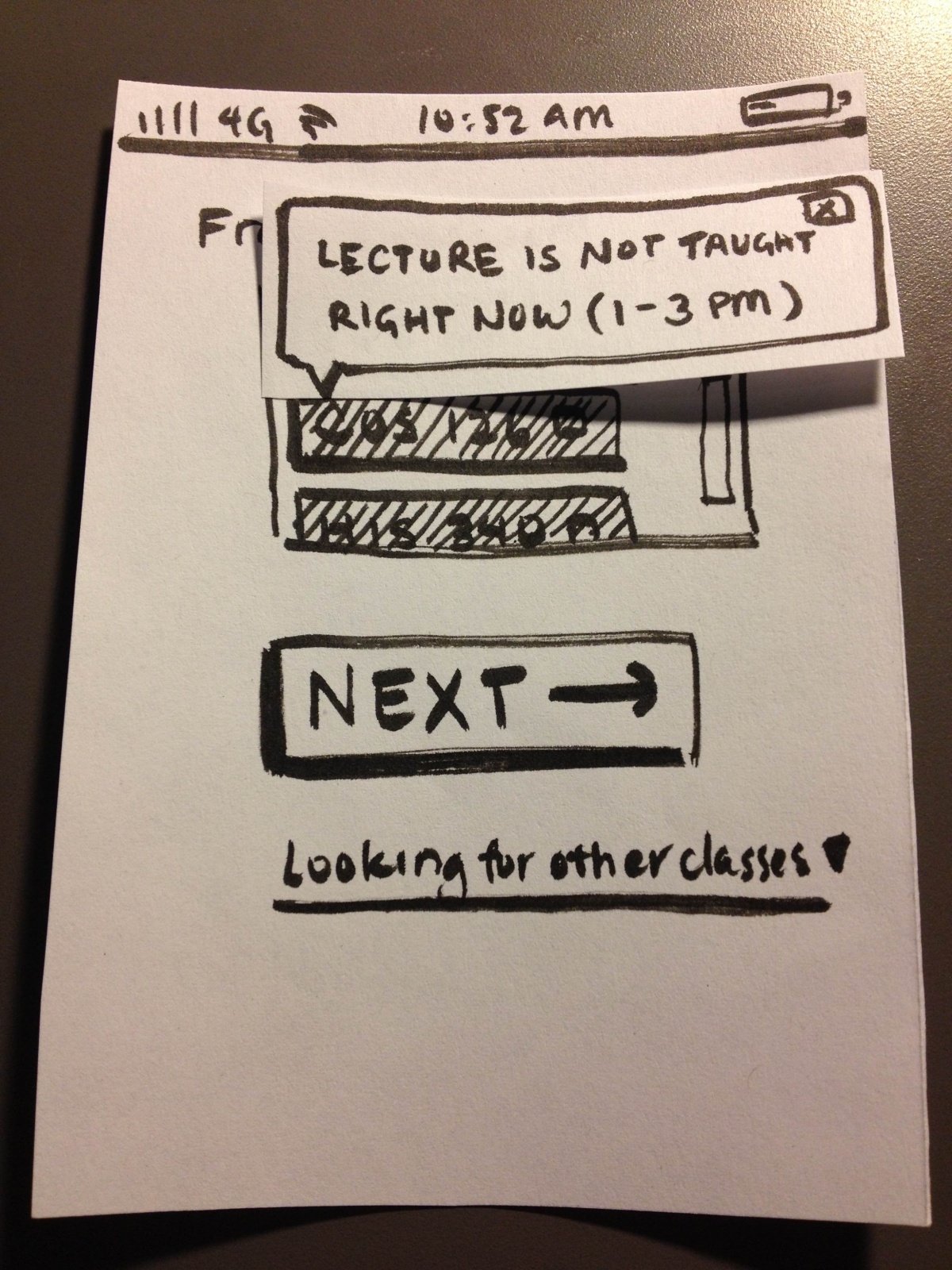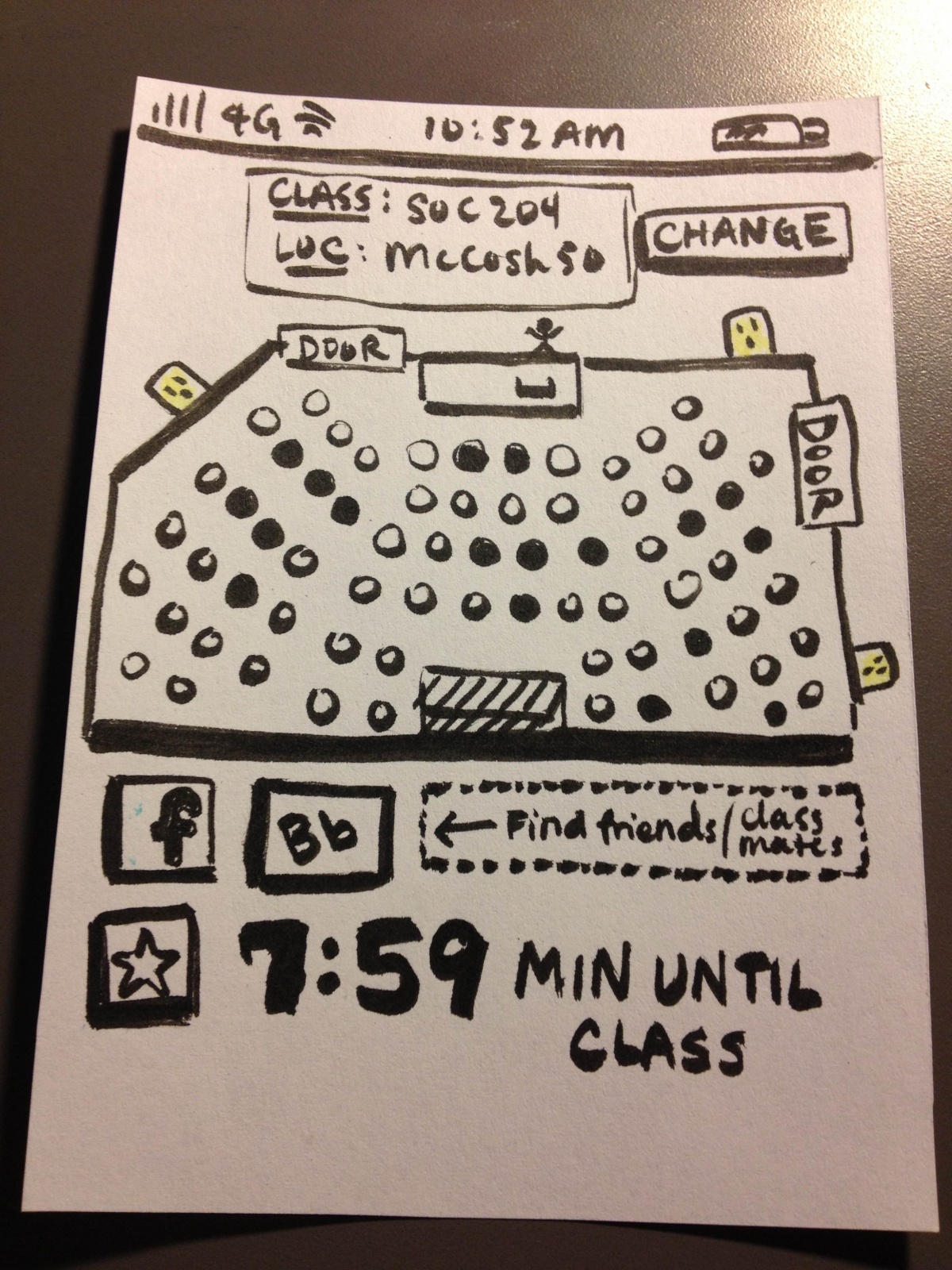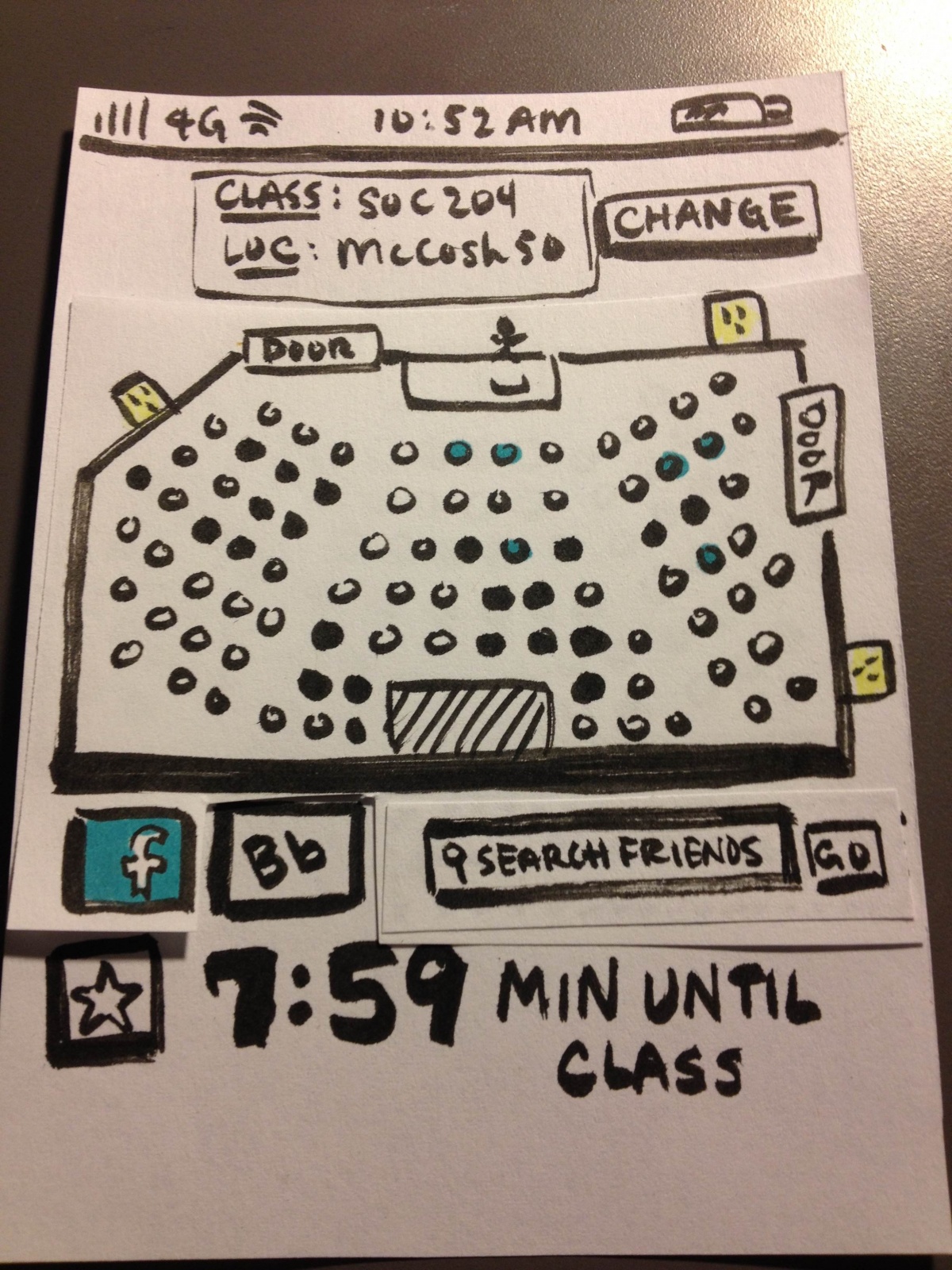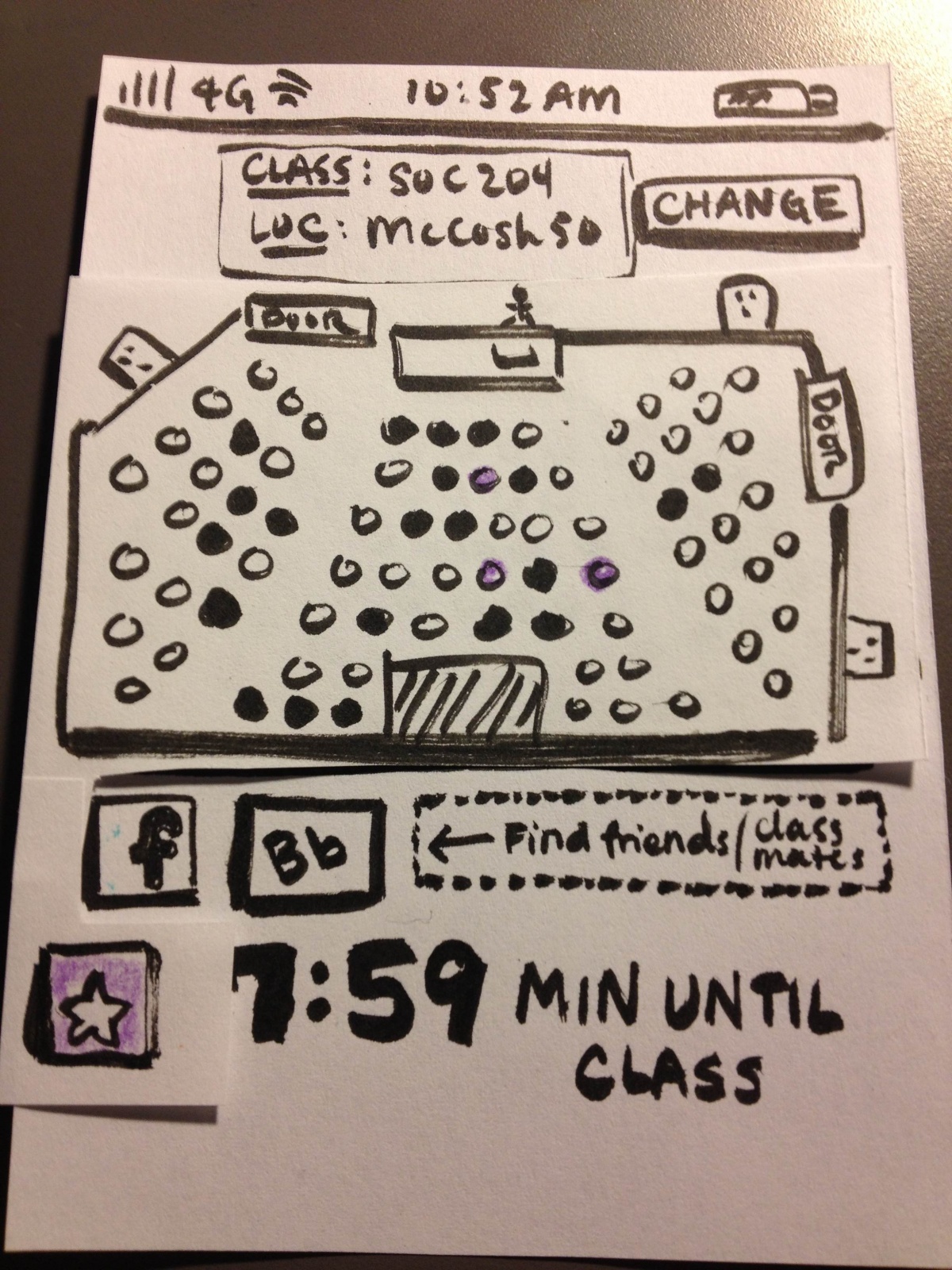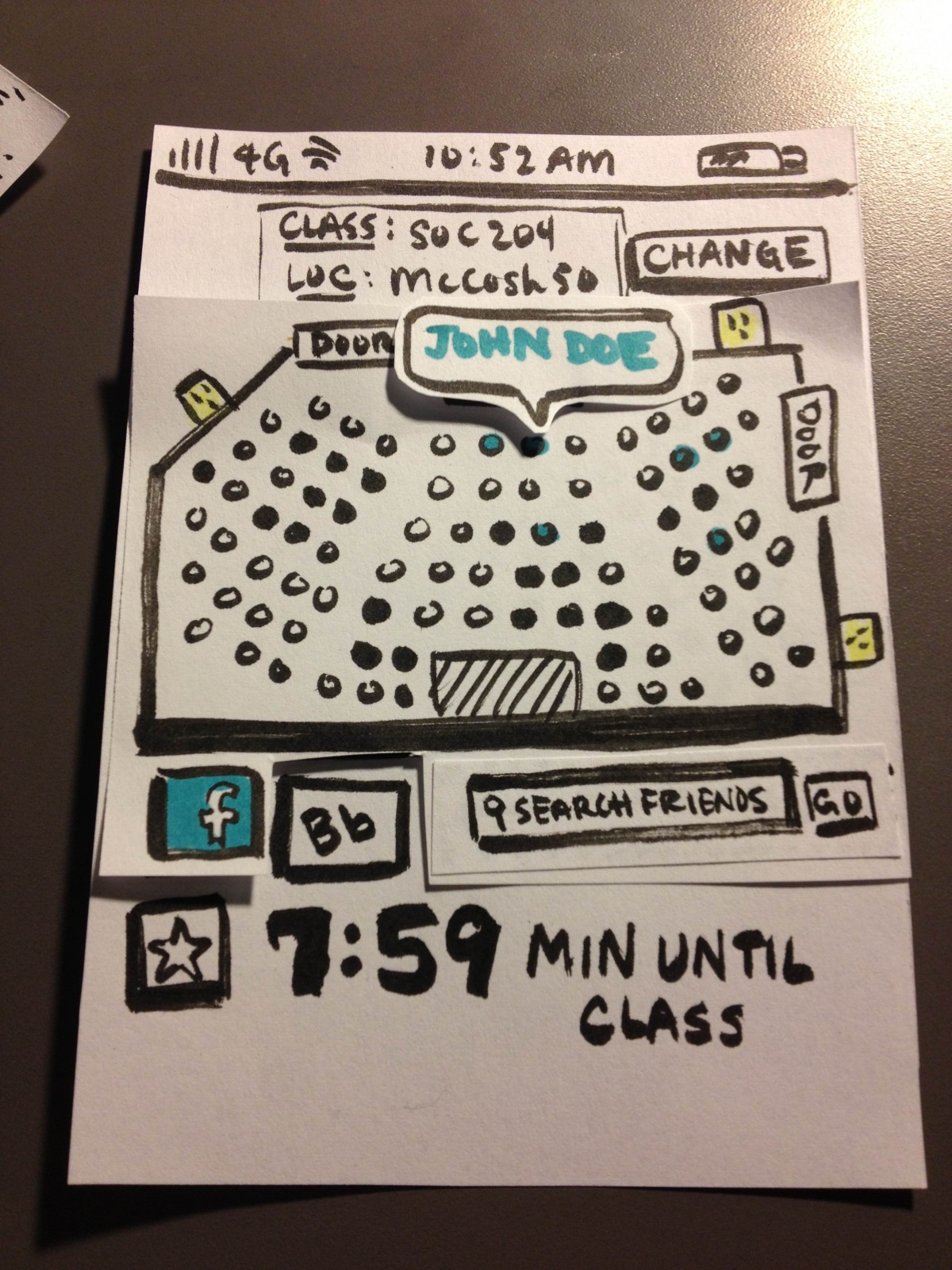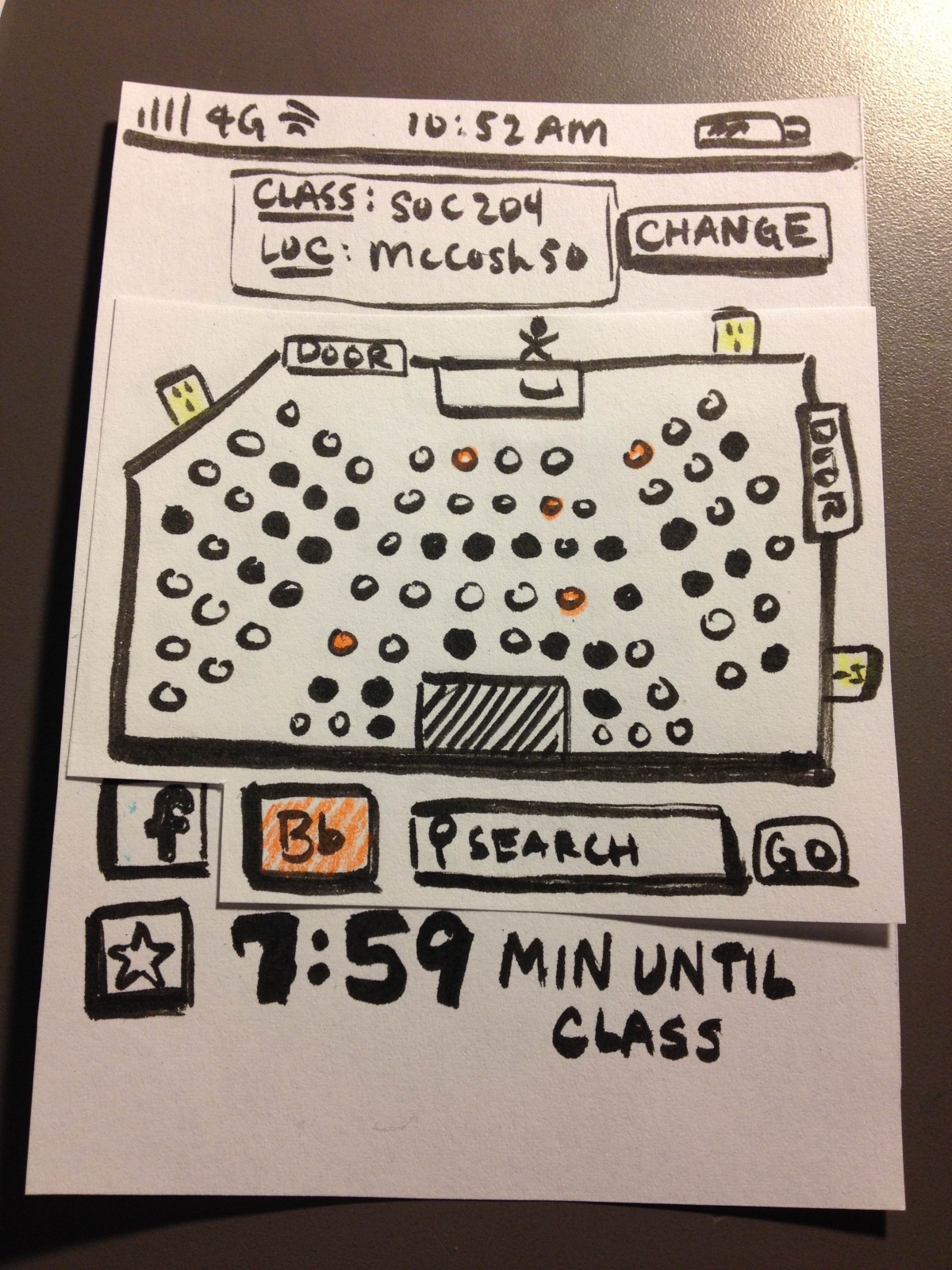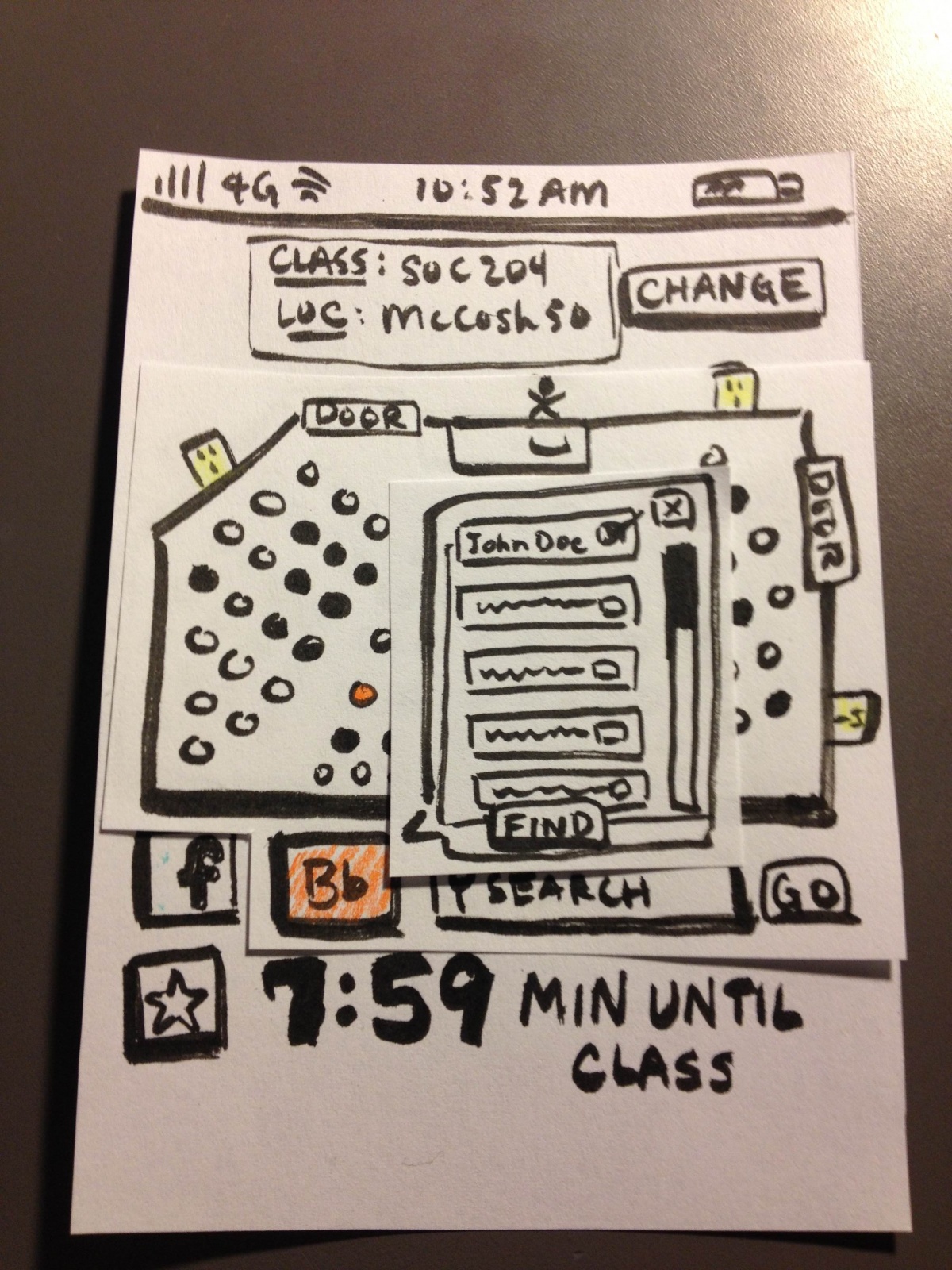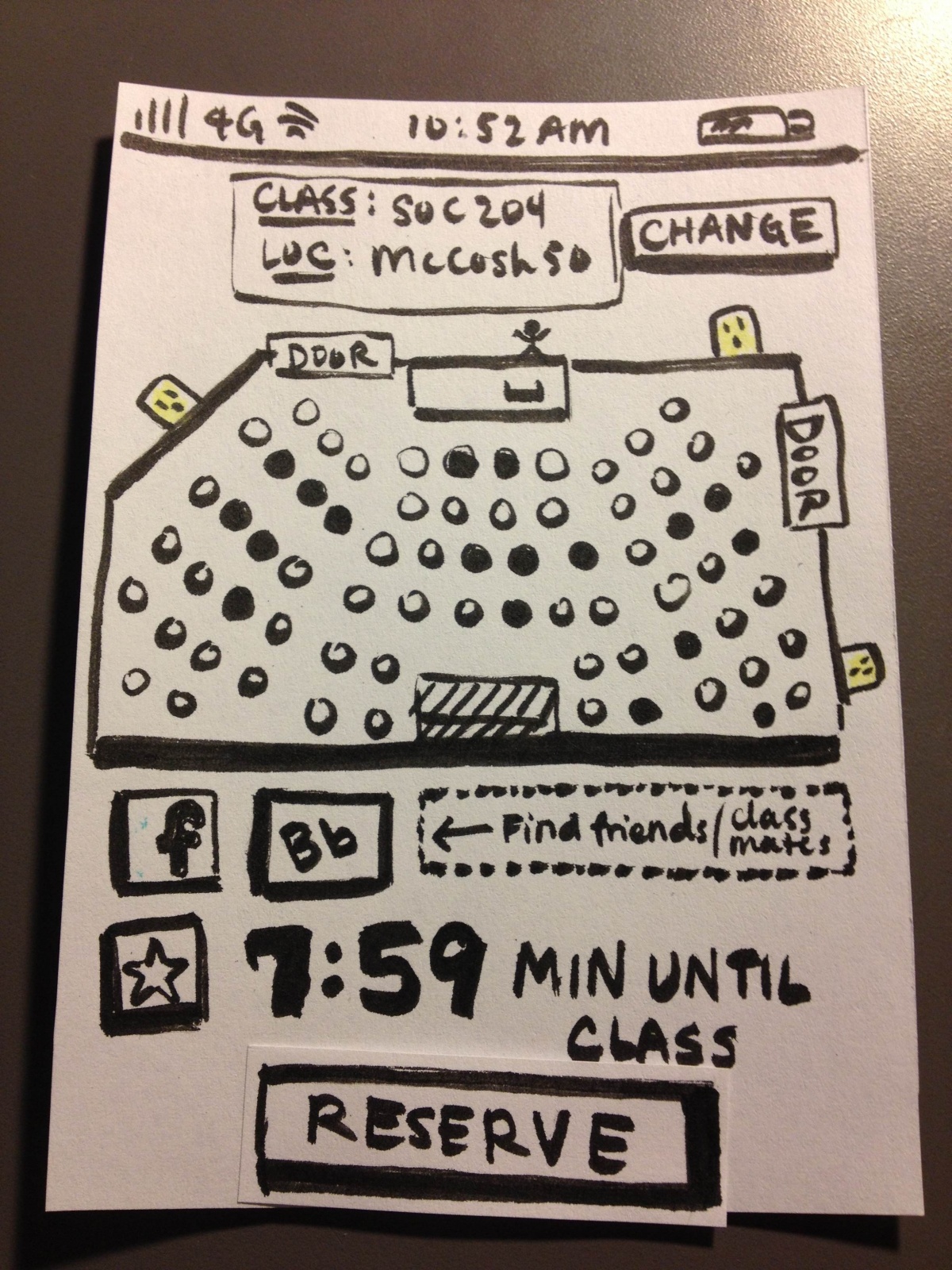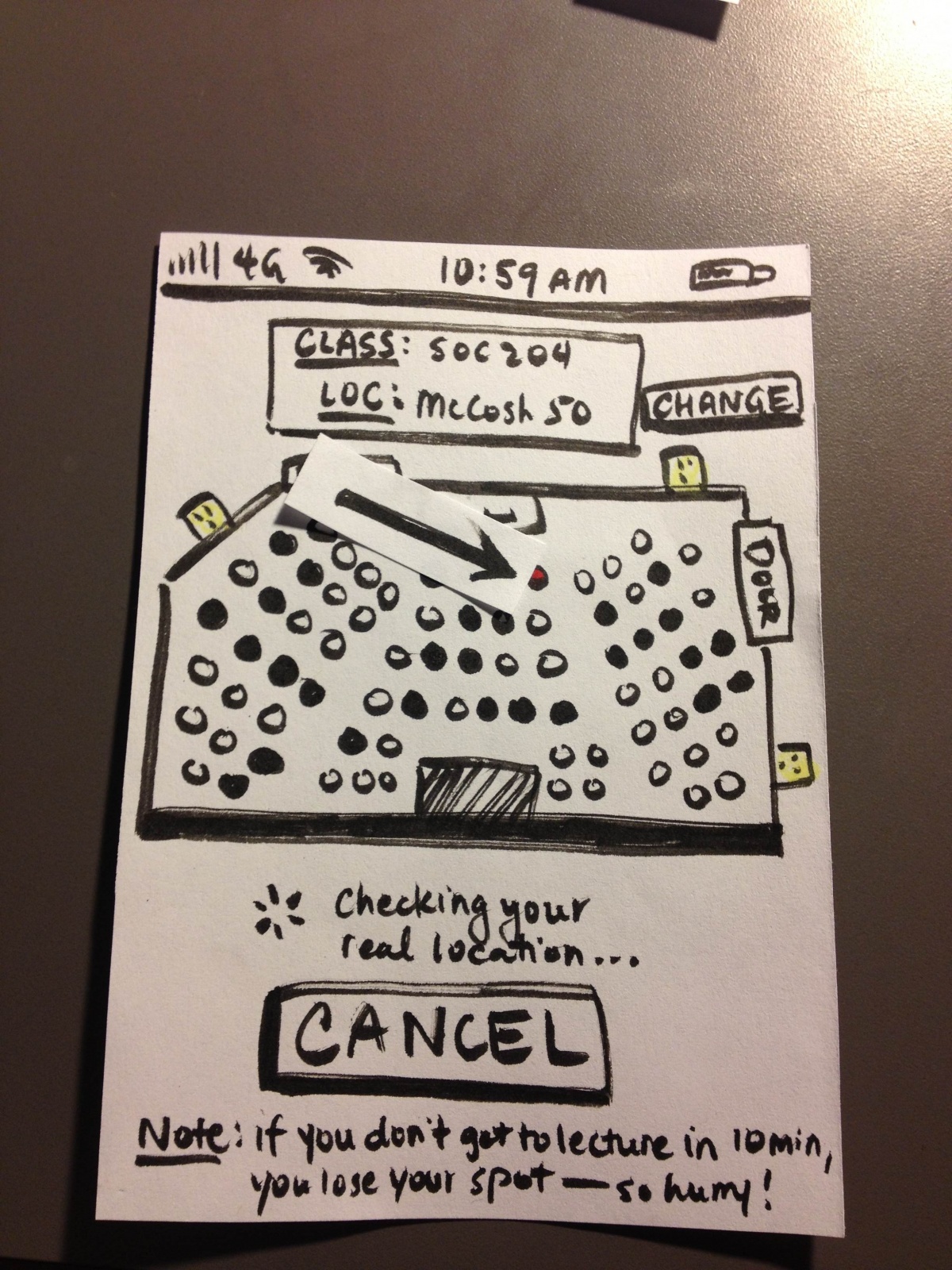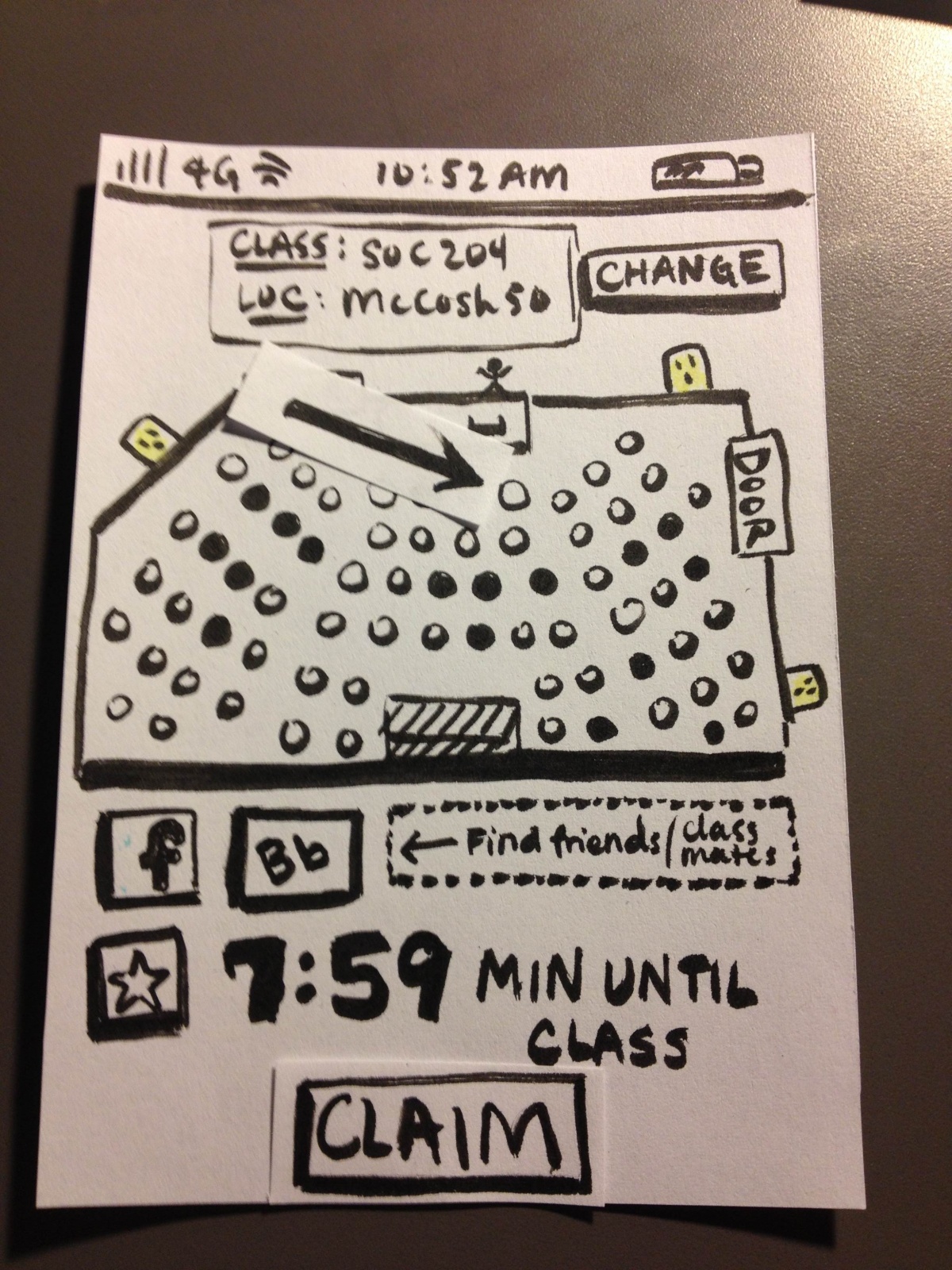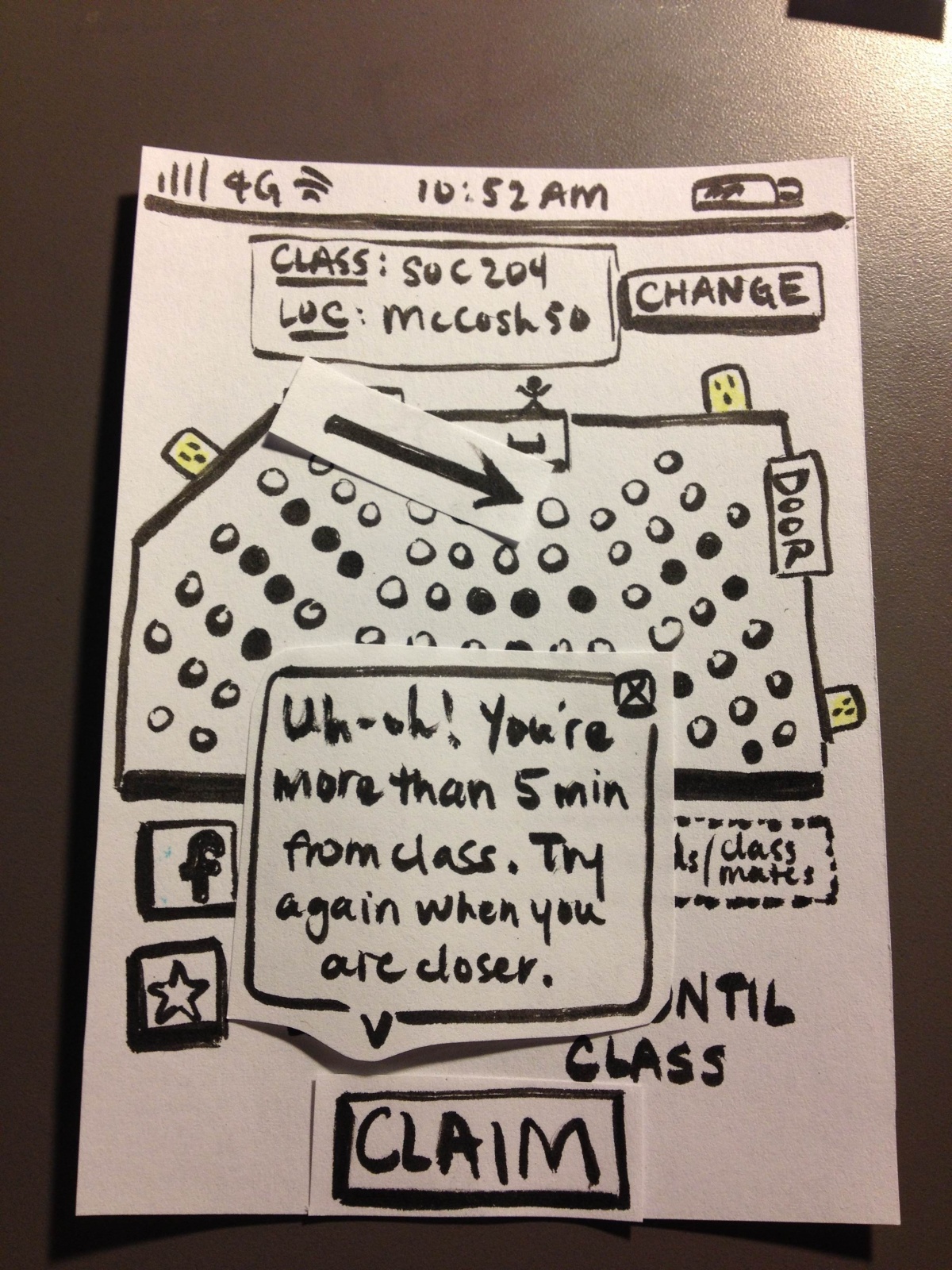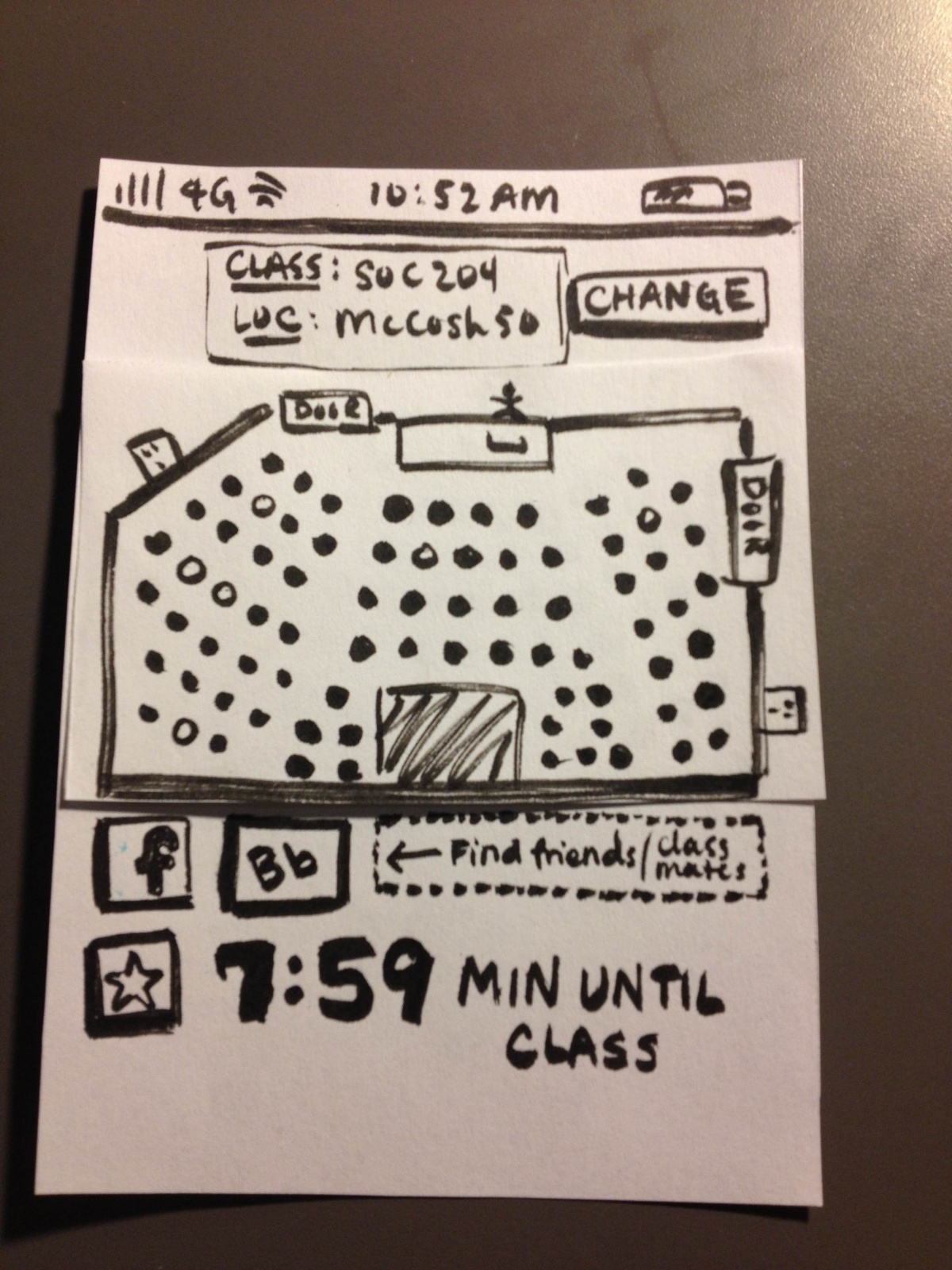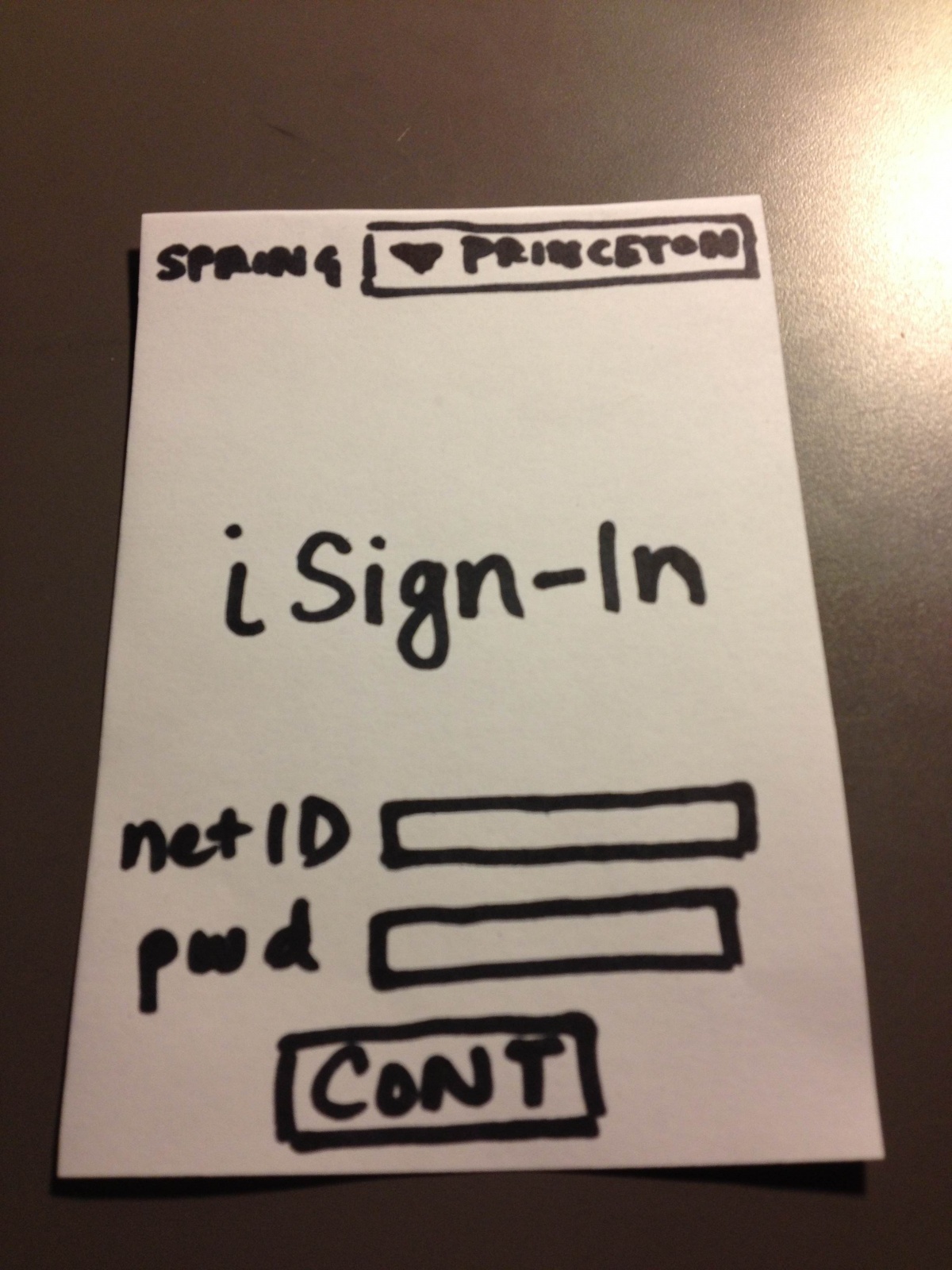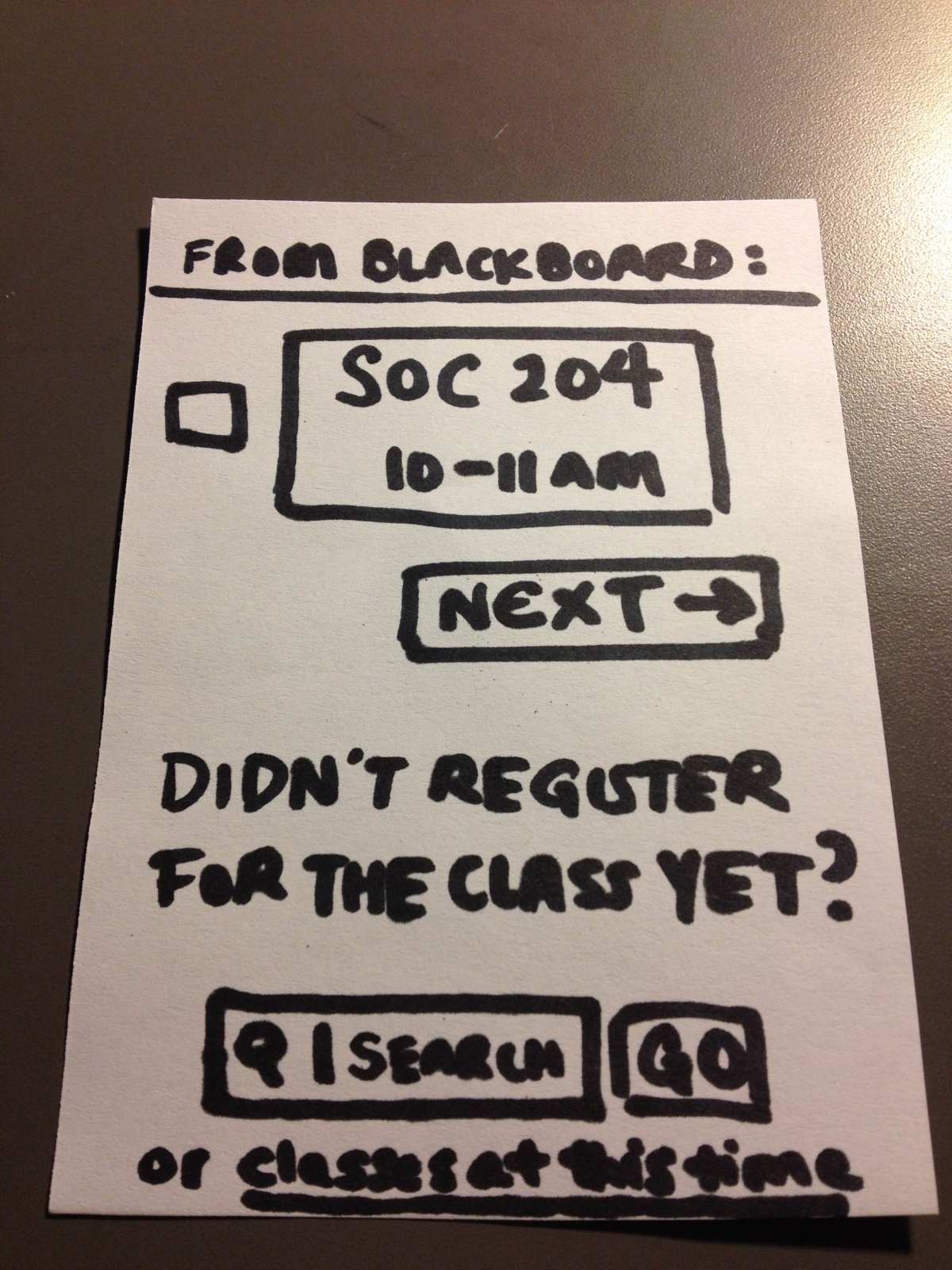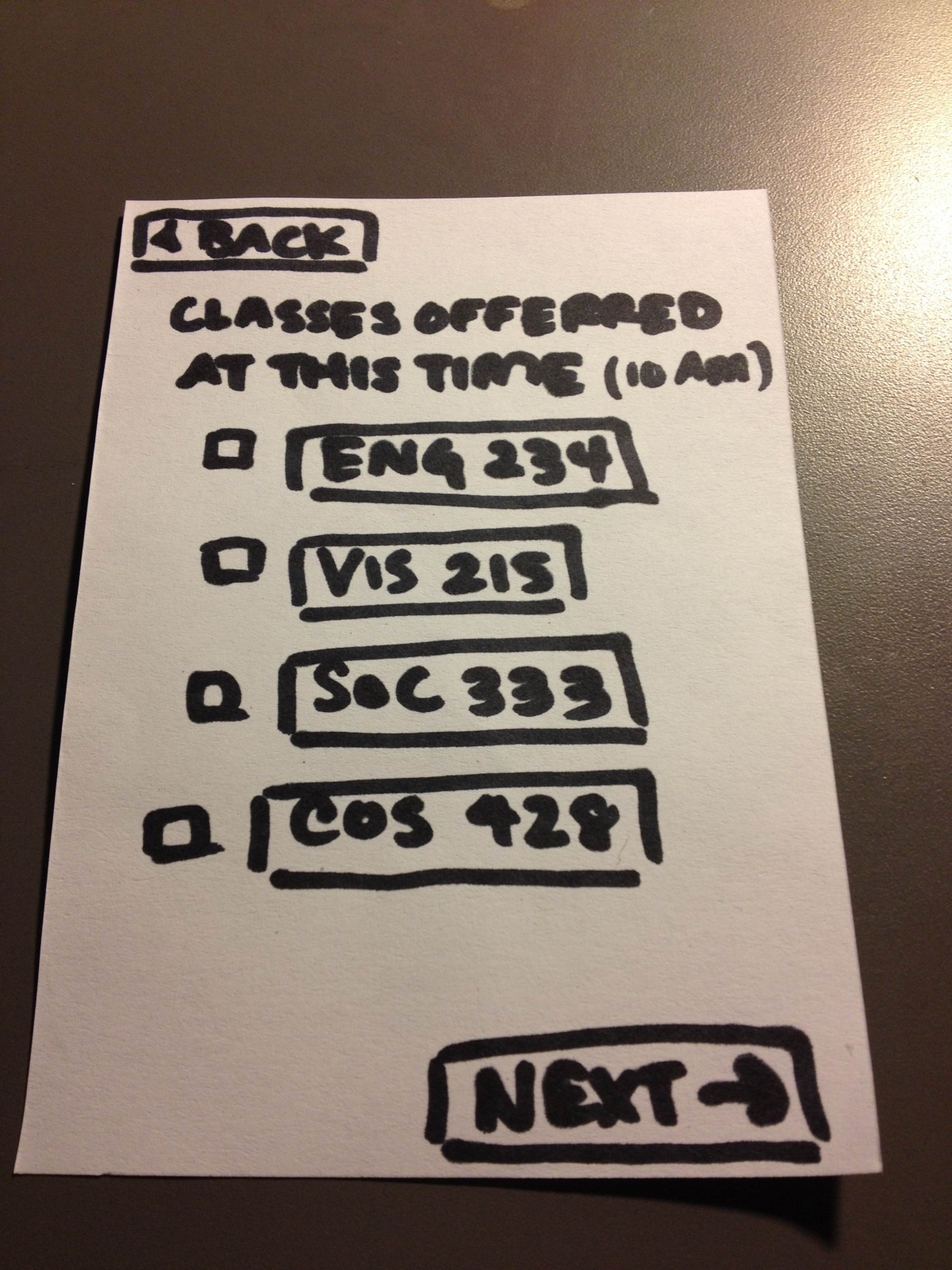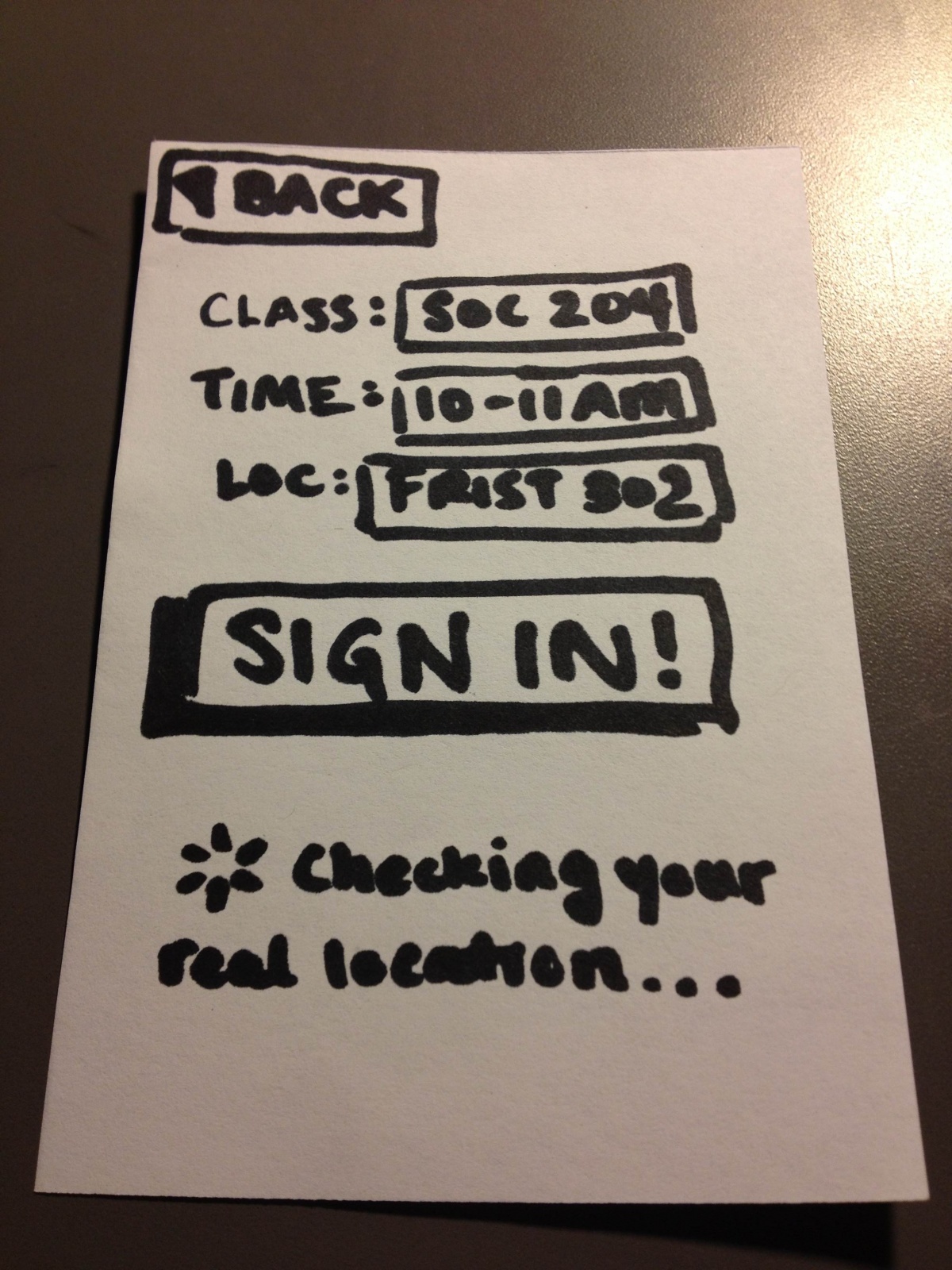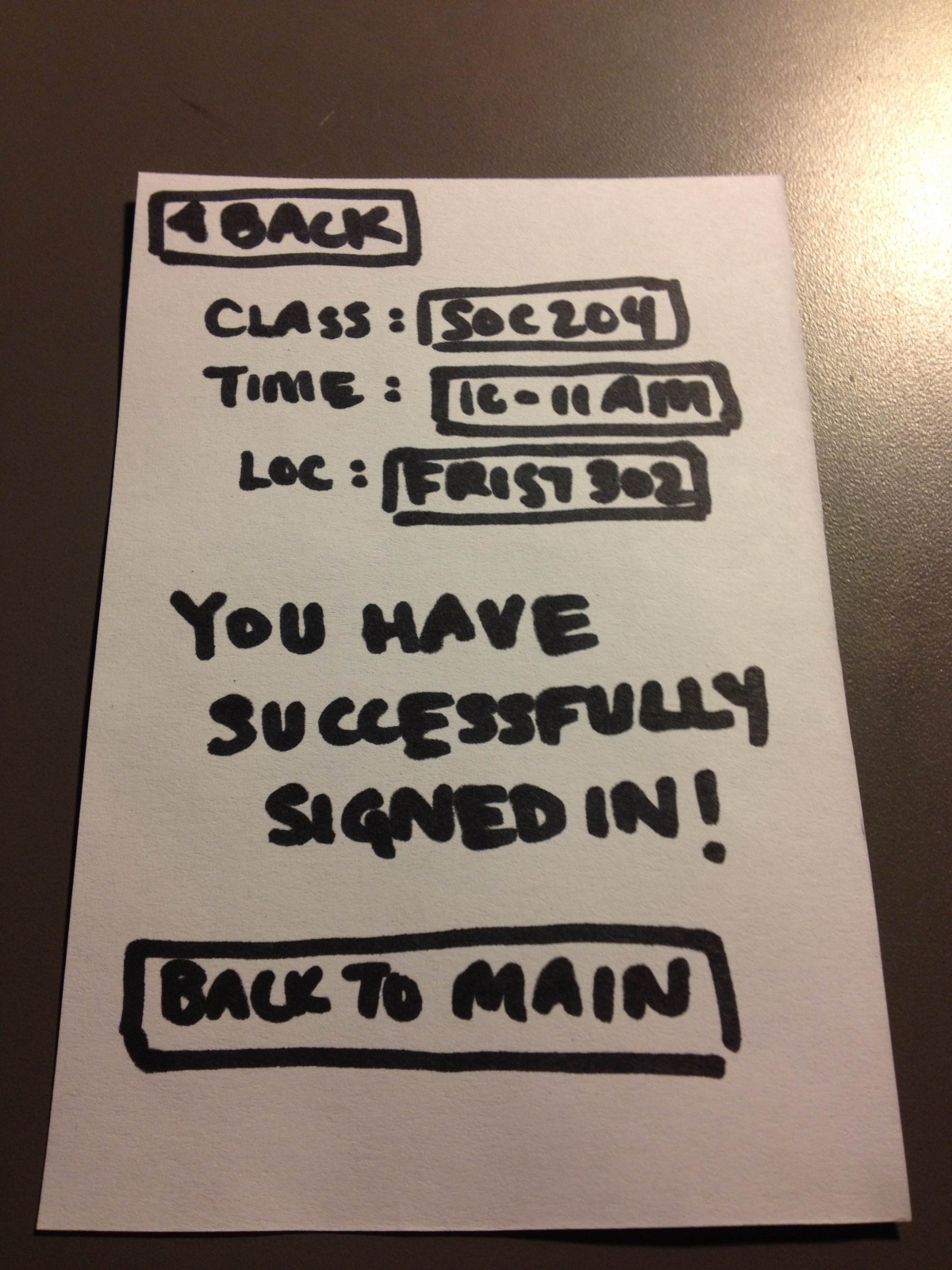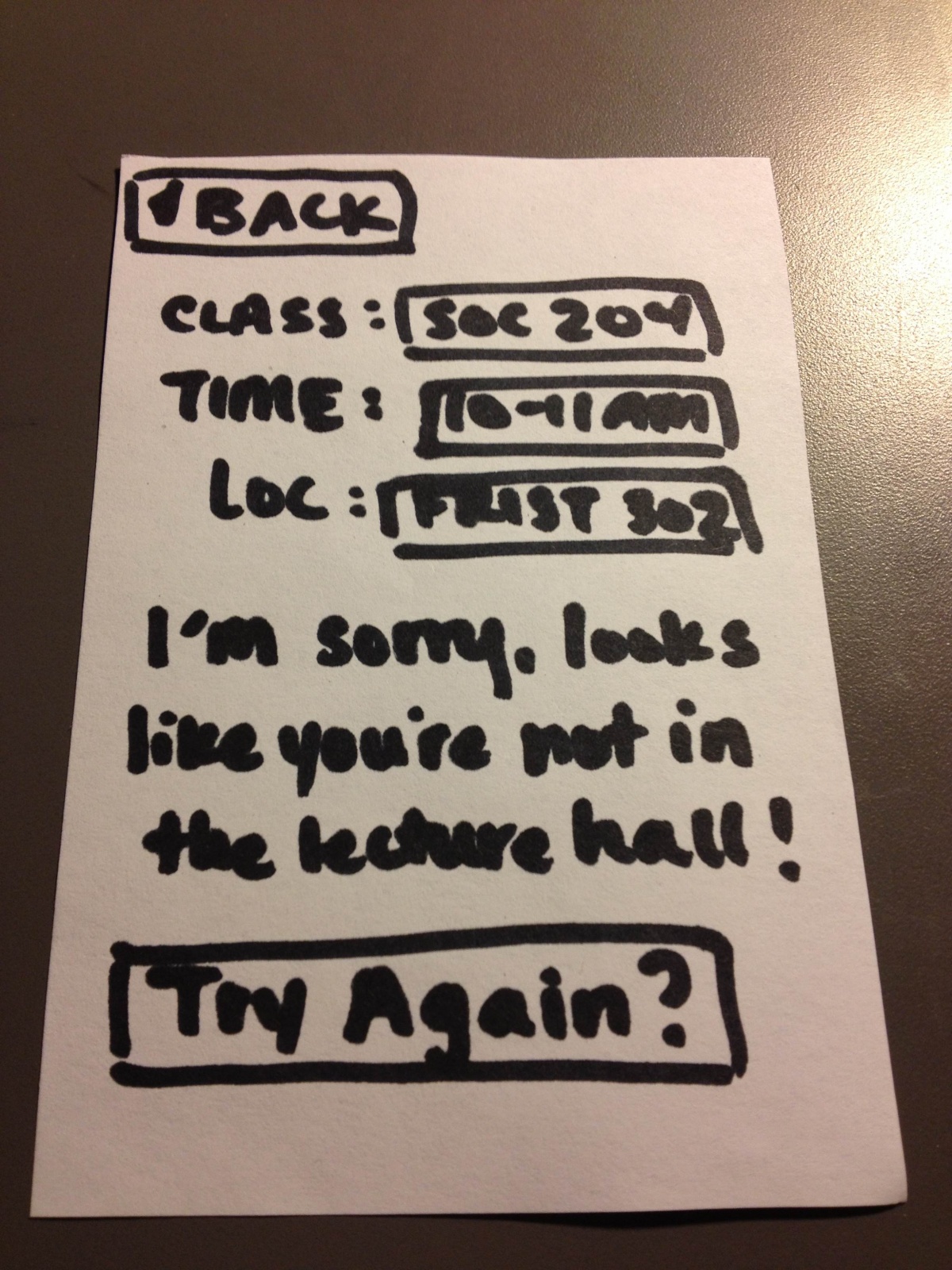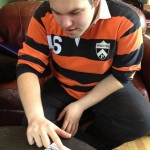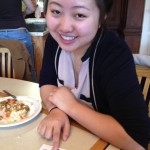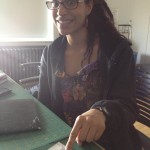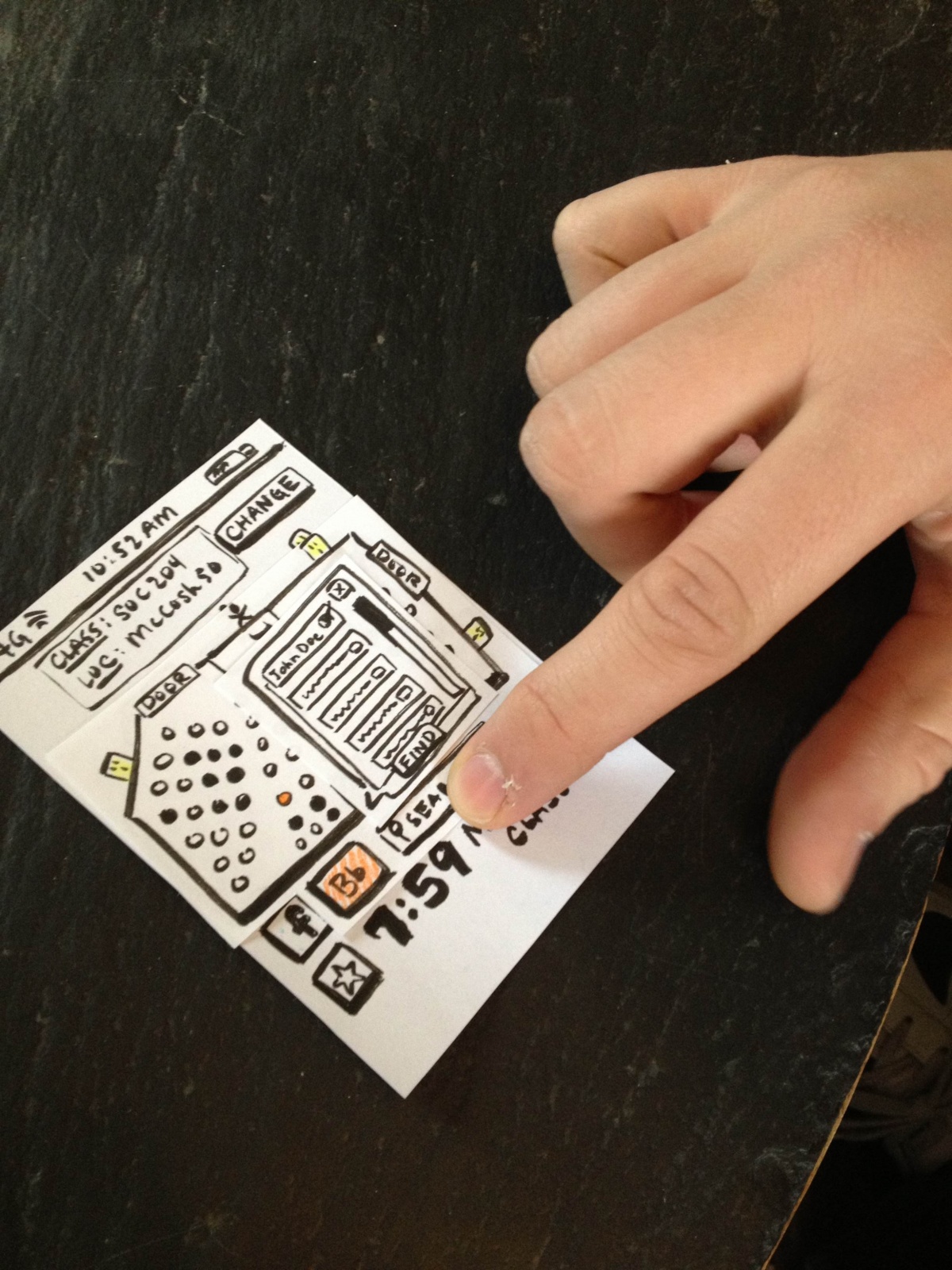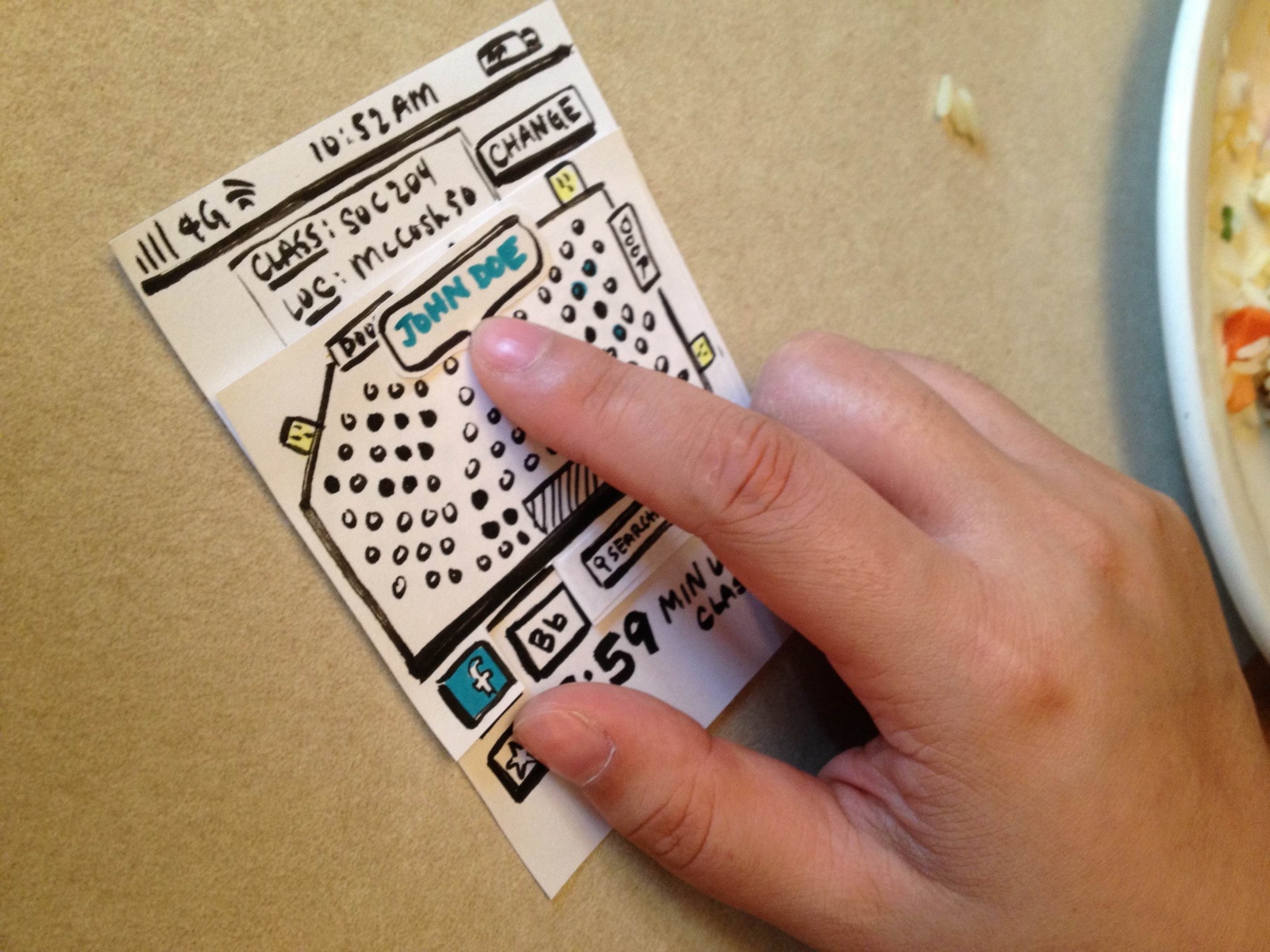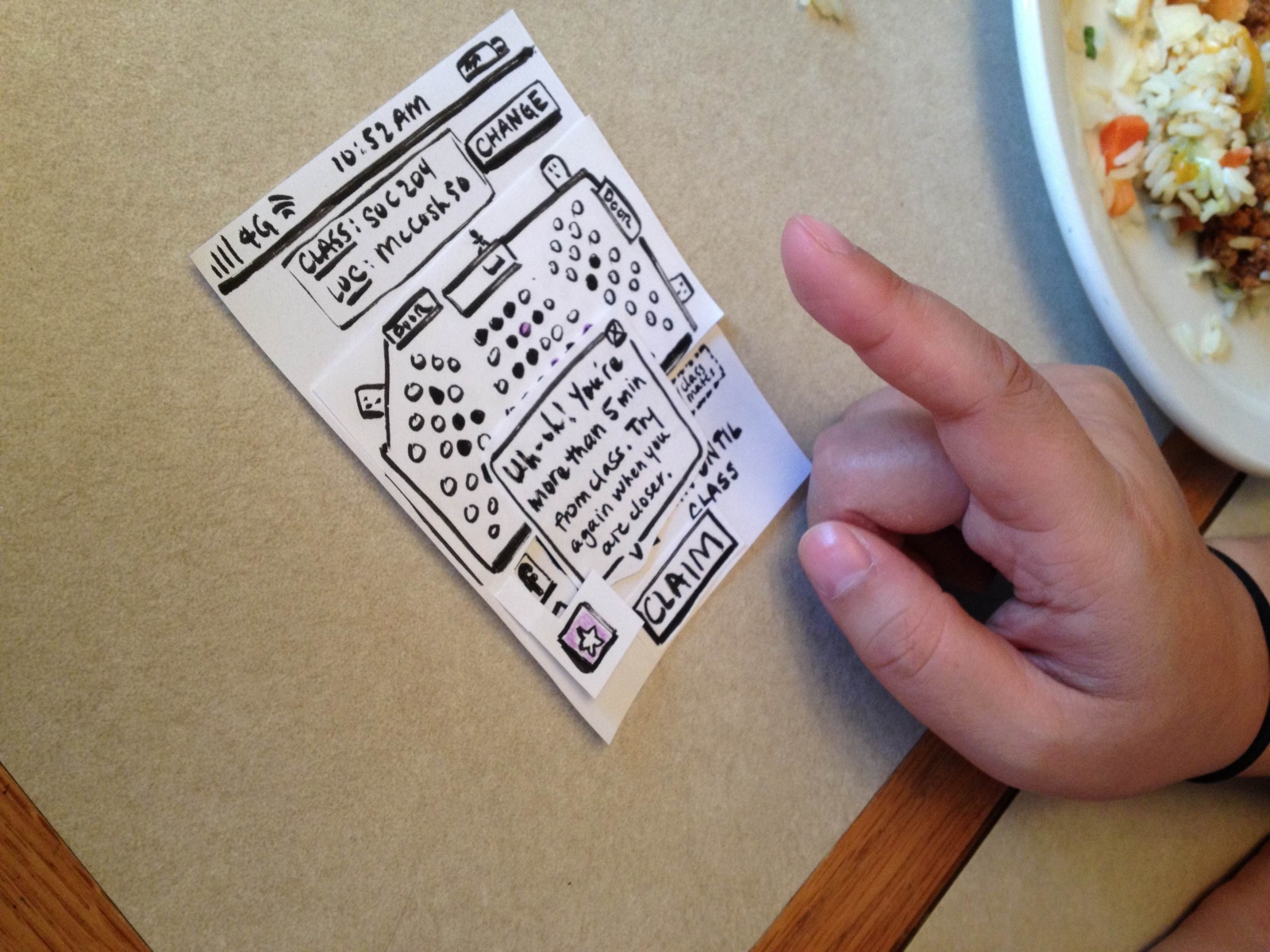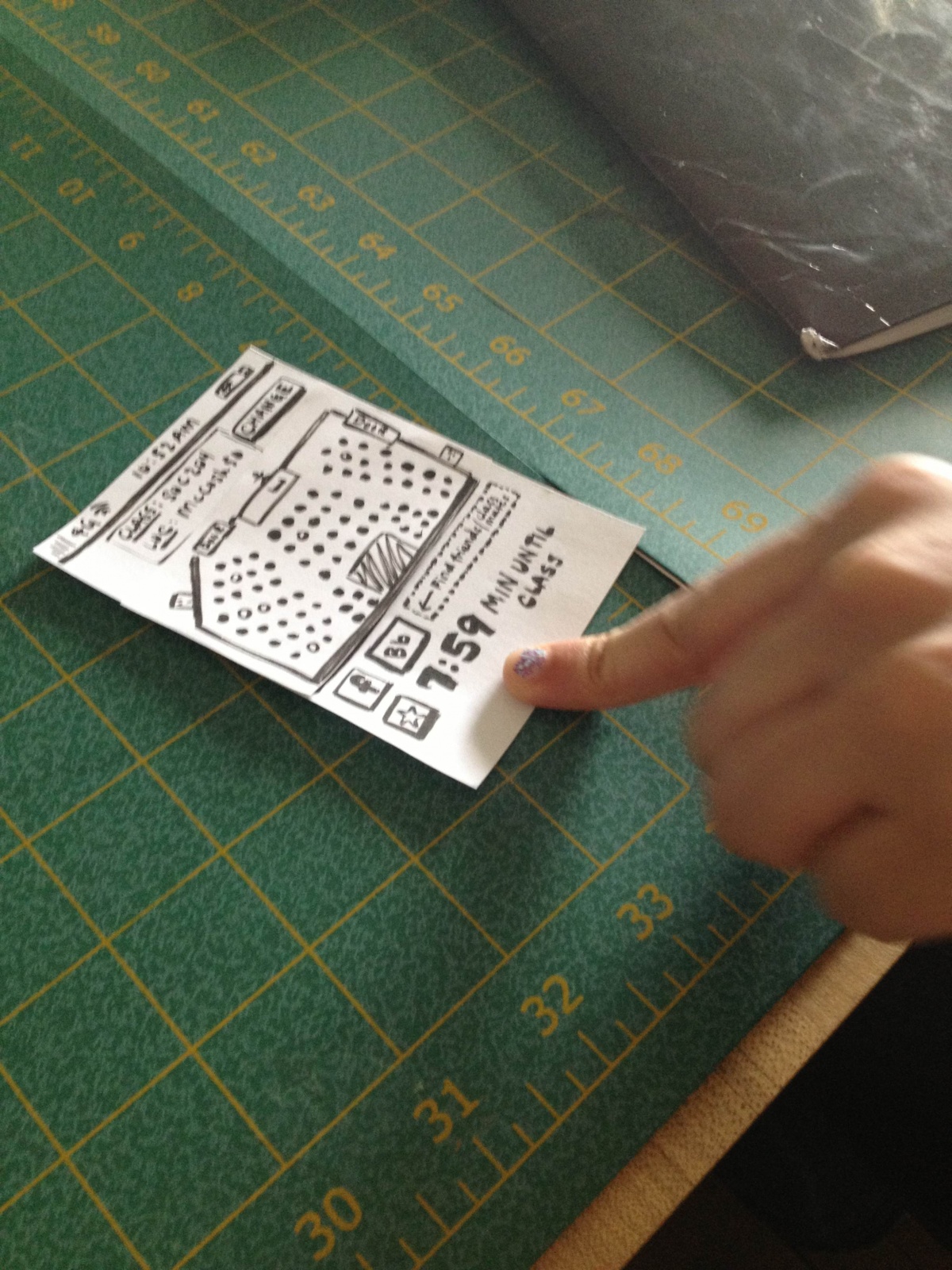1. OBSERVATIONS
I conducted both contextual interviews as well as personal observations of students and professors walking to and/or waiting for class. I asked the following prompting questions:
- What kind of activities do you do if you get to class early?
- What do you see your professors do?
- Can you describe your actions if you are late lecture?
- What’s your preferred method of walking to class? With friends, listening to music, etc. Are there any inconveniences related to that method of walking to class? (ex. can’t find friends)
- What are some things you would like to do in the 10 minutes before class, but it’s hard to do?
The results from the contextual interviews are as follows:
Molecular Biology major (F), sophomore, on the way to class in Friend (Early Morning) —
- If she gets to class early, plays with smartphone (checks email/facebook/reddit), may use laptop before class but depends on whether she will be taking notes on her laptop for the particular class.
- She may check the following class-related material: lecture notes (download and open), reviewing notes from last lecture for the quiz at the beginning of lecture (cell & dev bioogy), syllabus and upcoming assignments.
- Professors prepare lecture materials, don’t really do anything before lecture, erase the chalkboard.
- If late to lecture, she will be frantically copying down things on the board and trying to follow from there.
- Doesn’t ride a bike, mostly walks to class by herself and walks with a friend if she knows they are walking to the same class.
ORFE major (F), junior, waiting for class to start in Frist (Early Morning) —
- If I get to class early, she usually talks with people that I’ve walked to class with or check email/facebook on phone/laptop.
- Professors have played music and youtube videos (tangentially relevant to class), answer students’ questions, pass out papers before class, one professor has assigned seating so he places namecards out for every student.
- It’s really awkward to walk into class if late to lecture, will feel bad and sit and listen for first 10 minutes without taking notes or getting laptop out of bag (feeling guilty). Early to seminar more often since participation matters more.
- Difficult to find seats in large lecture halls, especially if it’s a large class. Don’t know where friends are sitting and sometimes need to climb over seats.
- By the second week of class, basically know which friends are in similar classes and walk with them.
- Would like to “preview” the lecture or read a little bit of what professor is going over. Other thing that would be nice is if we could go over what went on in previous class. Also, hard to find bathrooms in McCosh.
Woodrow Wilson school major (M), senior, eating lunch —
- Check email on iphone, depending on class review notes from last lecture, think about other work.
- Professors speak with various students, fiddling with projectors, very often speaking with preceptors.
- Late to lecture actions depend on size of lecture — large lecture, would just walk in and find first empty seat and sit down; small lecture/class, everyone sits in same seat (you have a seat), know exactly which seat to go to.
- Like to walk to class quickly, optimal route.
- Problems: don’t know where water fountains are, can’t sharpen pencil (no pencil sharpeners!).
Personal interviews — I also observed professors and students in my own classes.
Sociology Professor (morning class): early to class, uses projector (has some trouble setting up and interacting with the system), has folders open for students to hand in assignments on a table at the front of the lecture hall, checks lecture material on laptop, watches and waits for students to get seated, starts class a little after the beginning time for lecture after students stop trickling into the lecture room.
Students before lecture: checking email/read news on laptops, talking among themselves after walking into class with friend, eating snacks (continues into class), asking professor/TA specific questions about assignment or previously discussed topic, turning in an assignment before class, signing in on a paper sign-in sheet that the professor passes around.
In summary, I observed the following design opportunities:
- Make finding facilities simpler, ie. bathrooms, water fountains, pencil sharpeners (owned by other students?) seats in lecture halls…
- Help students look up class information that can be accessed in 10 minutes — quick due dates, admin info, professor’s email.
- Increase productivity of lecture learning with regards to reviewing material, previewing material, attendance…
- Short fun, interactive games to pass the time before lecture.
- Coordinating information with friends such as walking together to class.
2. BRAINSTORMING
The following are a list of ideas which Prakhar Agarwal (pagarwal@) and I came up with:
- Morning Announcements — broadcasting information about the campus activities of the day on the projector prior to the beginning of lectures.
- iSign-In — attendance mobile application which takes advantage of the smartphone’s “check-in” capability, letting students use phone GPS to record lecture attendance and replace sign-in sheets.
- Upvote Me — Mobile application forum where students can submit class-relevant questions, allowing other students to “upvote” the best questions so that the professor answers them first.
- ClickNAnswer — Mobile or web application which allows students to provide real-time feedback/answers to a professor’s questions, similar to the functionality of an i-clicker from physics classes.
- Flashcard Matching — Allows students to create flashcard games for other students to play, like Sporcle for language classes.
- Popcorn — Students log into a mobile app which allows the professor to randomly pick people to answer questions, facilitating class discussions, and may be a good way to record participation points.
- MyDeadline — A mobile app where you can check the upcoming deadlines for a class (assignments, projects, etc), available in both calendar or task list form and can integrate with Blackboard.
- SeatFinder — Mobile application that shows you which seats are full as a lecture starts to fill up and where your friends are sitting, hopefully motivating students to go to class.
- CampusLife — Mobile calendar tailored to daily Princeton campus events, integrating with Facebook events to also show how many of your friends are going so you can better coordinate, as well as how many TigerTickets you have left.
- WalkWithMe — Combines class schedule data from Ice and lecture room locations to show you a list of friends that have class nearby so you can walk the same direction together.
- MyStudyGroup — A discussion board viewable on your mobile phone where students can aggregate what they learned from the previous lectures, rather than the professor posting the content.
- Audit Course Recommender — For students with hour or more gaps in between classes, the application finds nearby lectures that are taught in that time so the student can audit the class.
- Grade Calculator — Takes the median/mean/grade data from Blackboard and instantly computes a score, as well as possibly projecting the scores needed on future assignments to achieve the desired grade.
- Map My Schedule — At the beginning of the semester, it’s annoying to keep looking up where your next class is so this app will plan out a route for you through the whole day!
- iHydrated — Shows the water fountains nearby based on the building you are in (using phone GPS or selecting the building in a map), plus it keeps track of how much water you drink everyday, making sure you are fully hydrated.
- ForgotMyCharger — Students can lend their electronics equipment for short-term use, like mac projector dongles/iphone charges/laptop chargers, could be useful for students who forgot chargers in class and can’t walk all the way back to their rooms.
- Lecture++ — For classes that taught many years in a row, students can rank specific days of specific classes that have been really rewarding so students outside of the class can go to that specific lecture.
3. SELECT 2 FAVORITE IDEAS
8. SeatFinder — This app would be for students trying to find where their friends are sitting in class, looking for seats in very full lecture rooms, or those who are coming in late and improves the seat finding process, which can be very awkward, wastes time, and often causes unnecessary distractions for students already seated.
2. iSign-in: For classes where attendance in lectures matter, it’s really low-tech and inefficient to have students initial a piece of paper — students have to wait a long time for the paper to pass around, it allows for students to sign their friends in who aren’t actually in lecture, as well as wasting a lot of paper making these sign-in sheets.
4. PROTOTYPES
SeatFinder prototype:
iSign-in prototype:
5. FEEDBACK
Here are the following students I consulted for user testing:
- Gary, Chemistry major (senior), at lunch
- Amy, ORFE major (junior), at lunch
- Lauren, Geosciences major (junior), before class
Some pictures from their tests:
- Gary asked if the black seats were the ones that were taken. Lauren also asked that question, and suggested that the open seats should be in color to be more visible and intuitive.
- Gary liked the idea that the star (“Faves”) option synced to phone contact. He would also use the Facebook friends option more than the other two.
- All the users said that if the lecture is really full (as shown by the app), would still attend.
- One question Gary asked about a potential problem: would we be trying to get this for every room on campus?
- Gary and Amy asked how reserving/claiming seats would be enforced — brought up the good point that if there are other students not using the app, they could take your seat.
- Amy thought this would be useful for more specific settings — like exams, could find seats quickly with time crunch before exam and enforce the honor code (after the face, see who was sitting next to whom if there was a honor code violation report).
- Both Amy and Lauren said that they would use either star (“Faves”) contacts or Blackboard, thought one was redundant.
- Amy didn’t think that either Option #1 or #2 is effective — suggested that the most fool-proof solution is to integrate it with the classroom (physically the seat is “marked” or show people in some way that it is taken).
- Lauren brought up a potential usage problem with people who are biking/longboarding to class — may encourage dangerous use of phone + bike/skateboard.
- All three users didn’t like the current way the Blackboard functionality is set up — hard to avoid people. Recommended solutions were a “permissions” system similar to Ice where you have to accept the other person’s request. Another option suggested was an “allow people to find me” button which would make them findable through Bb.
- All the users thought the ability to see where the outlets are in class was great.
- Nobody picked the “Load more classes…” or “Looking for other classes” options.
6. INSIGHTS & FUTURE IMPROVEMENTS
- Make the interface simpler — based on the user testing, there’s no need to have both the star (“Faves”) option and blackboard option, so one should be removed. The users seemed to prefer the “Faves” option. Also, none of the users tried the “Load more classes…” or “Looking for more classes?” option, which suggest they only want to see their immediately upcoming class. Can just show the upcoming class synced from Blackboard.
- Improve the floor plan interaction — Making it clearer which seats are taken/available would be better for the users. One suggestion is to make the available seats colored in the default setting and not simply white.
- Privacy — Users want to determine themselves what information is publicly available (like who is sitting in what seat). This why the blackboard option was not popular
- Feasibility — Need to consider how to effectively get the building plans for all the lecture halls. Do we personally go out to check where the outlets are? Need to find efficient way or if there are already available resources (online floor plans?).
- Enforce usage — From the user input, it seems like the best way to ensure that seats aren’t unfairly taken is if the app integrates with the course as a way to take attendance for the professors. This would mean that the administration needs to be consulted about the possibility of this app being approved and used by the university.
- Consider other applications — Amy brought up how this application would be very useful for taking exams and honor code enforcement. However, how often do honor code violations occur? Cost-benefit analysis for having this option need to be conducted and evaluated.
- Safety — How would this application impact students who bike or skateboard? This may encourage unsafe cellphone usage. May consider a way to reserve a seat using voice (calling a specific phone number).


